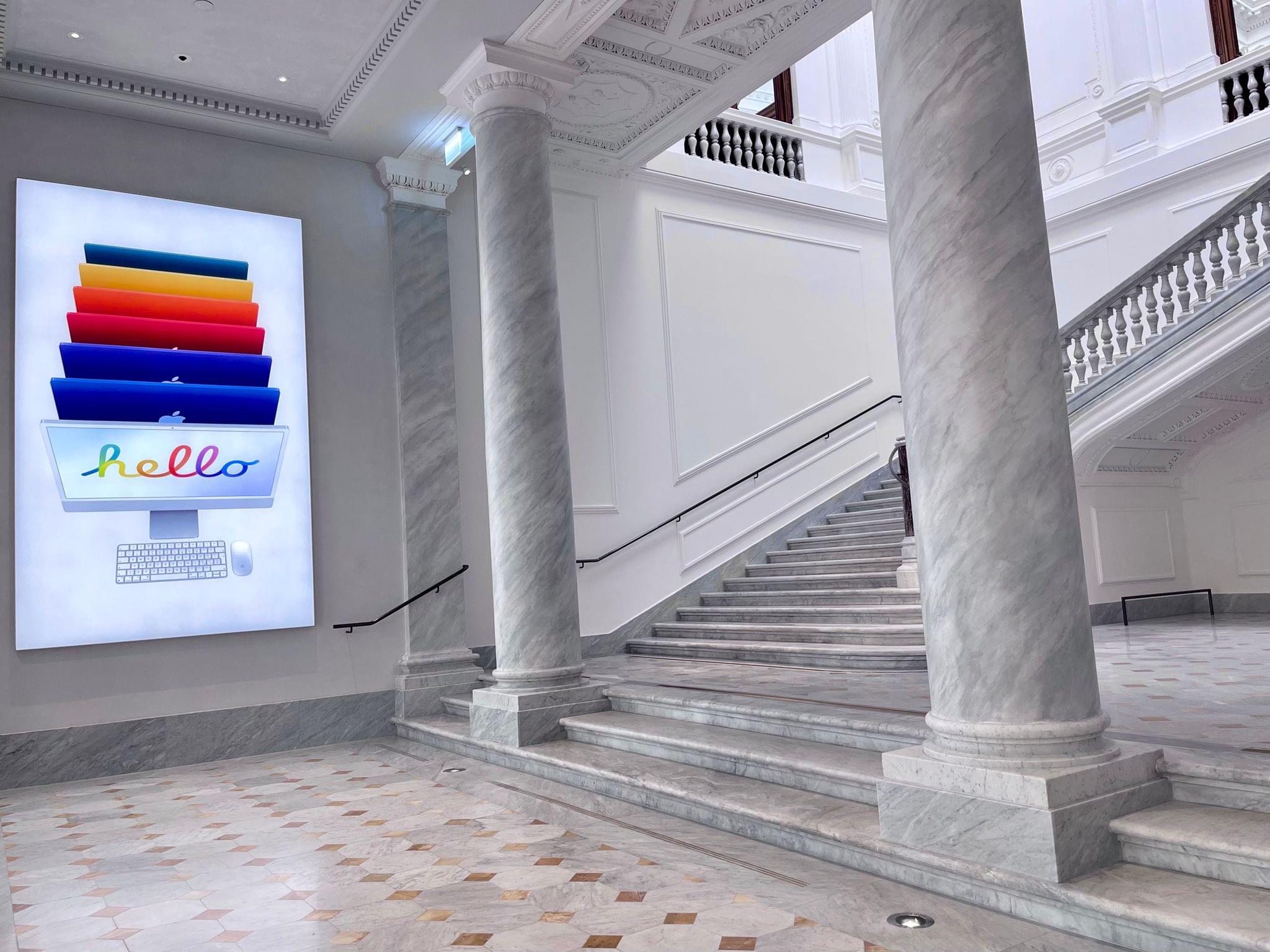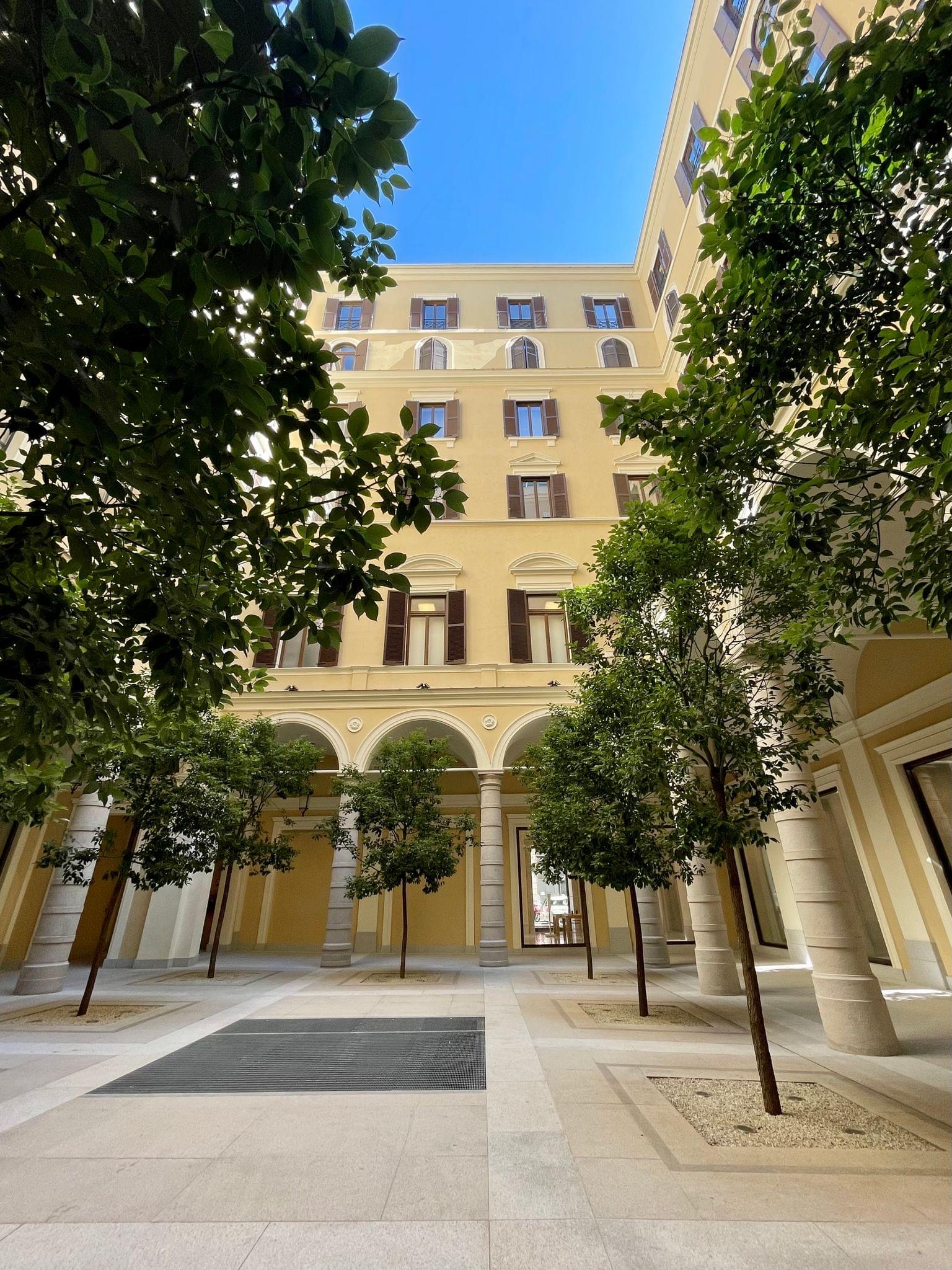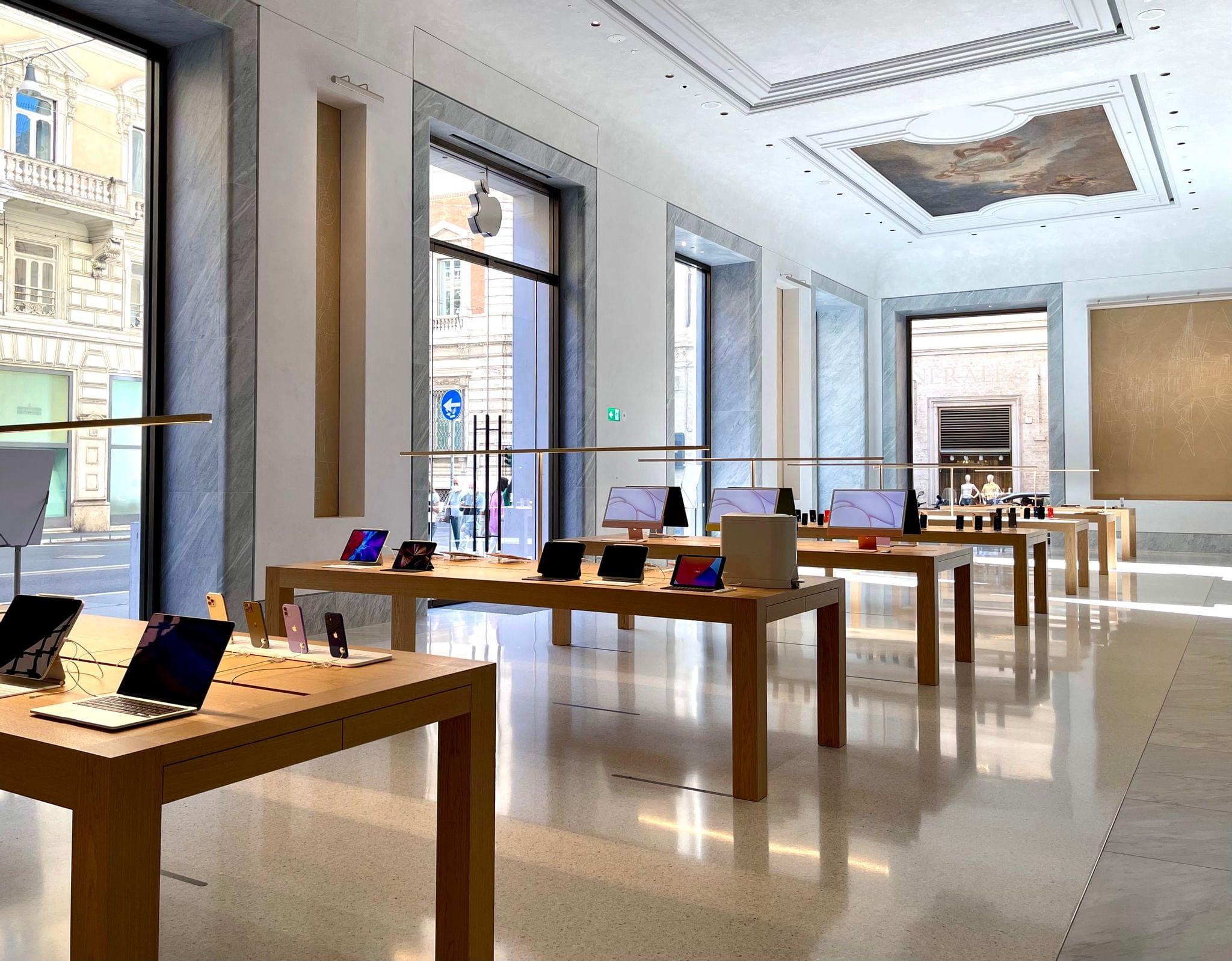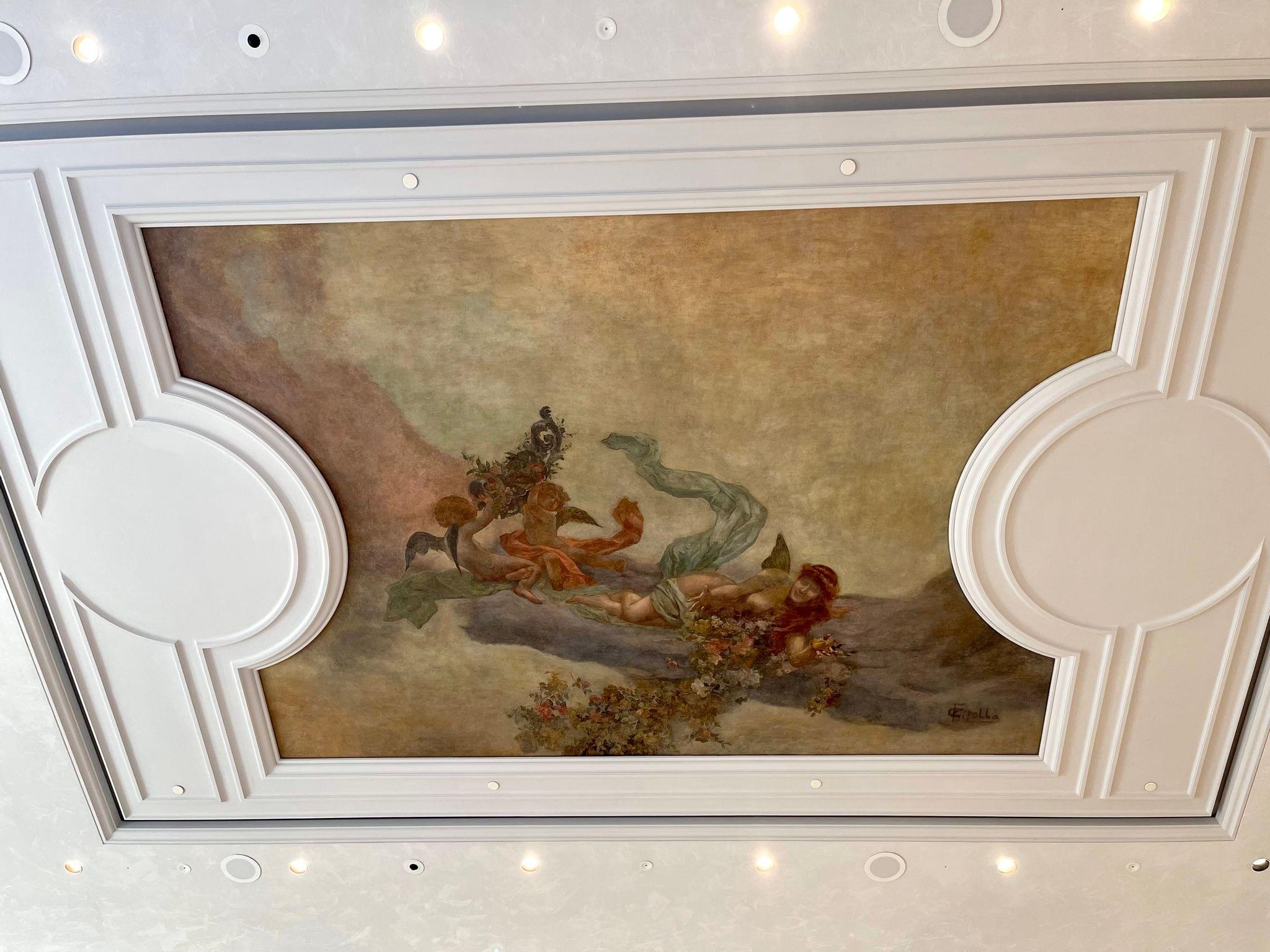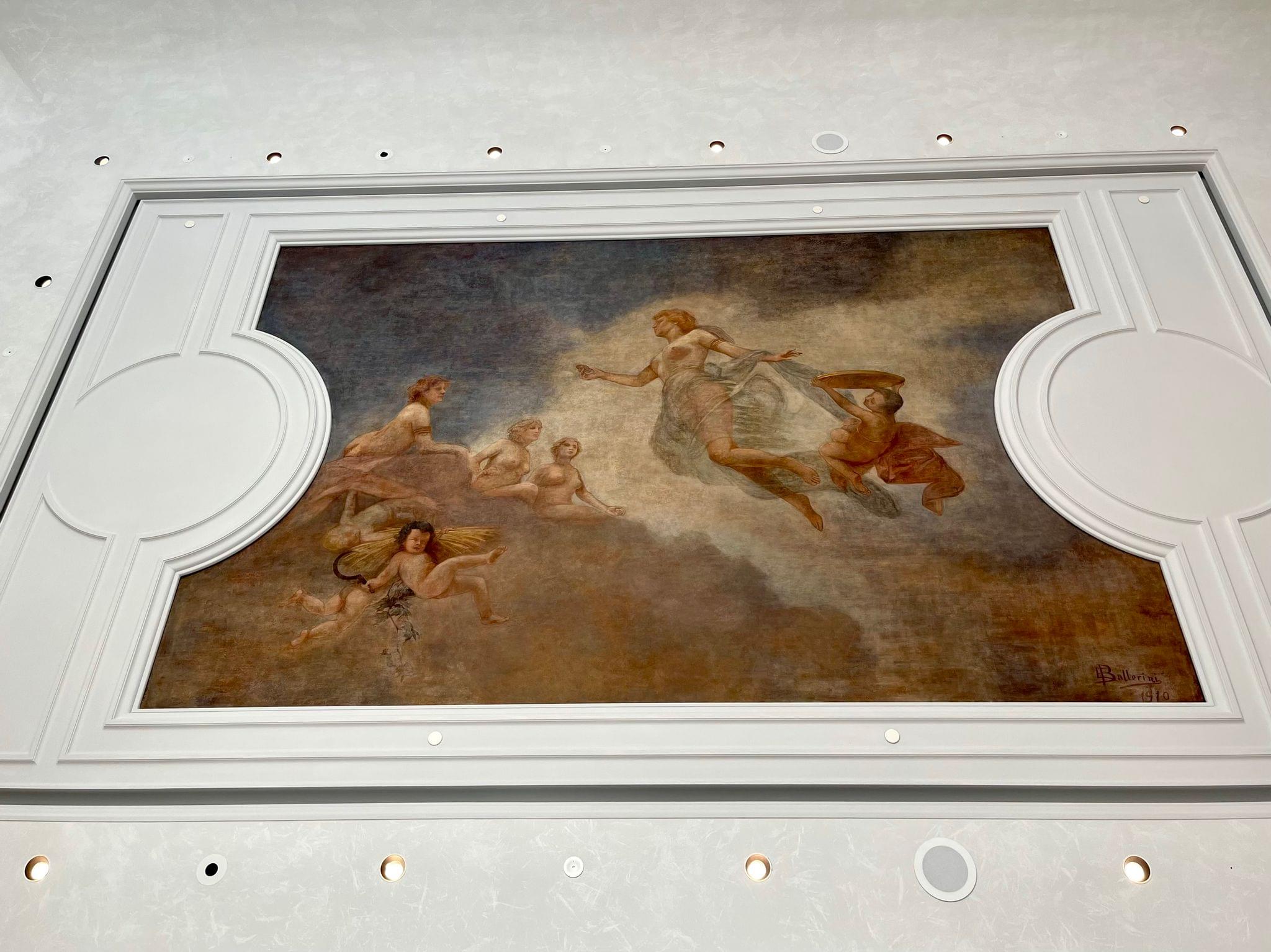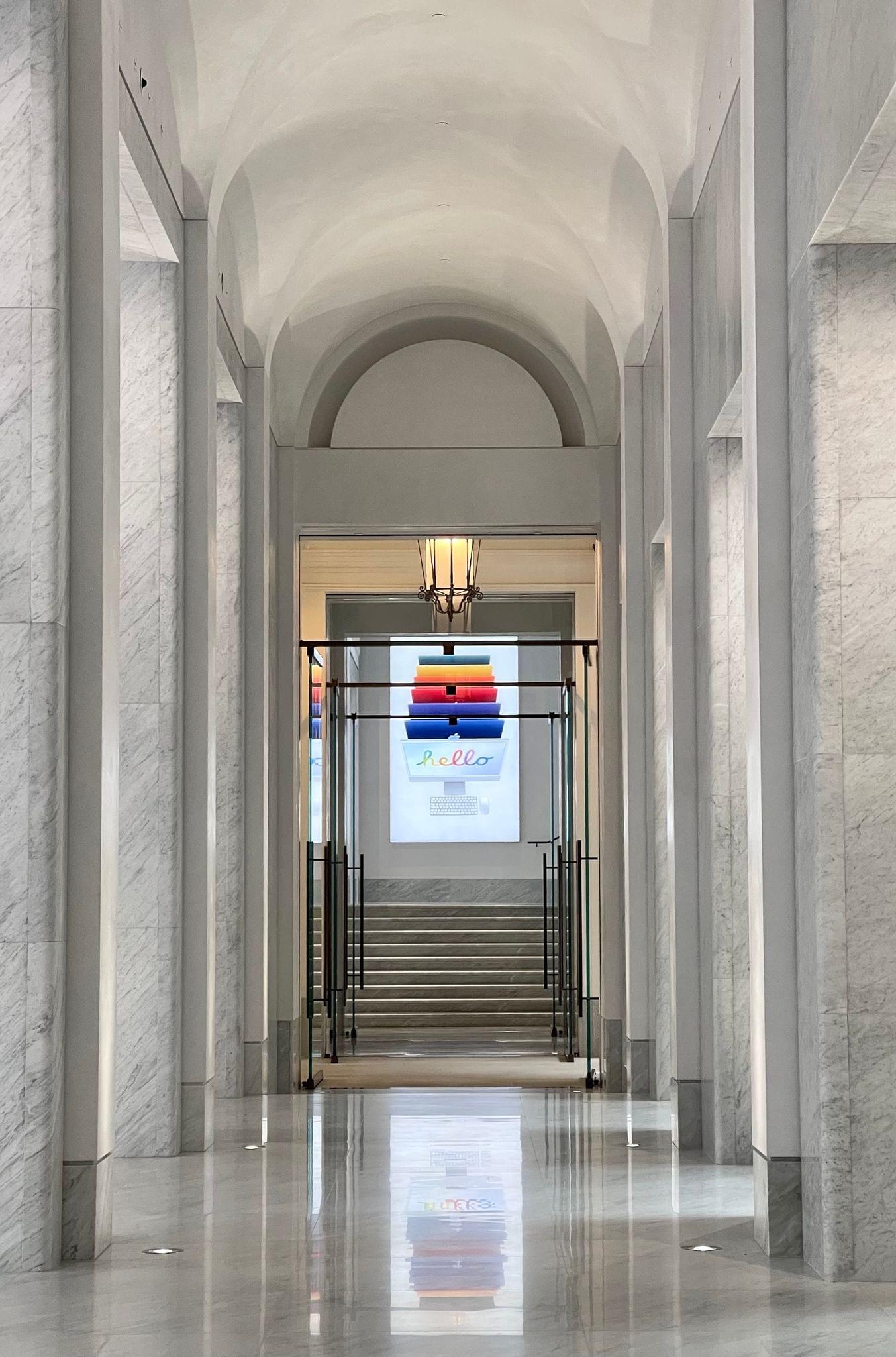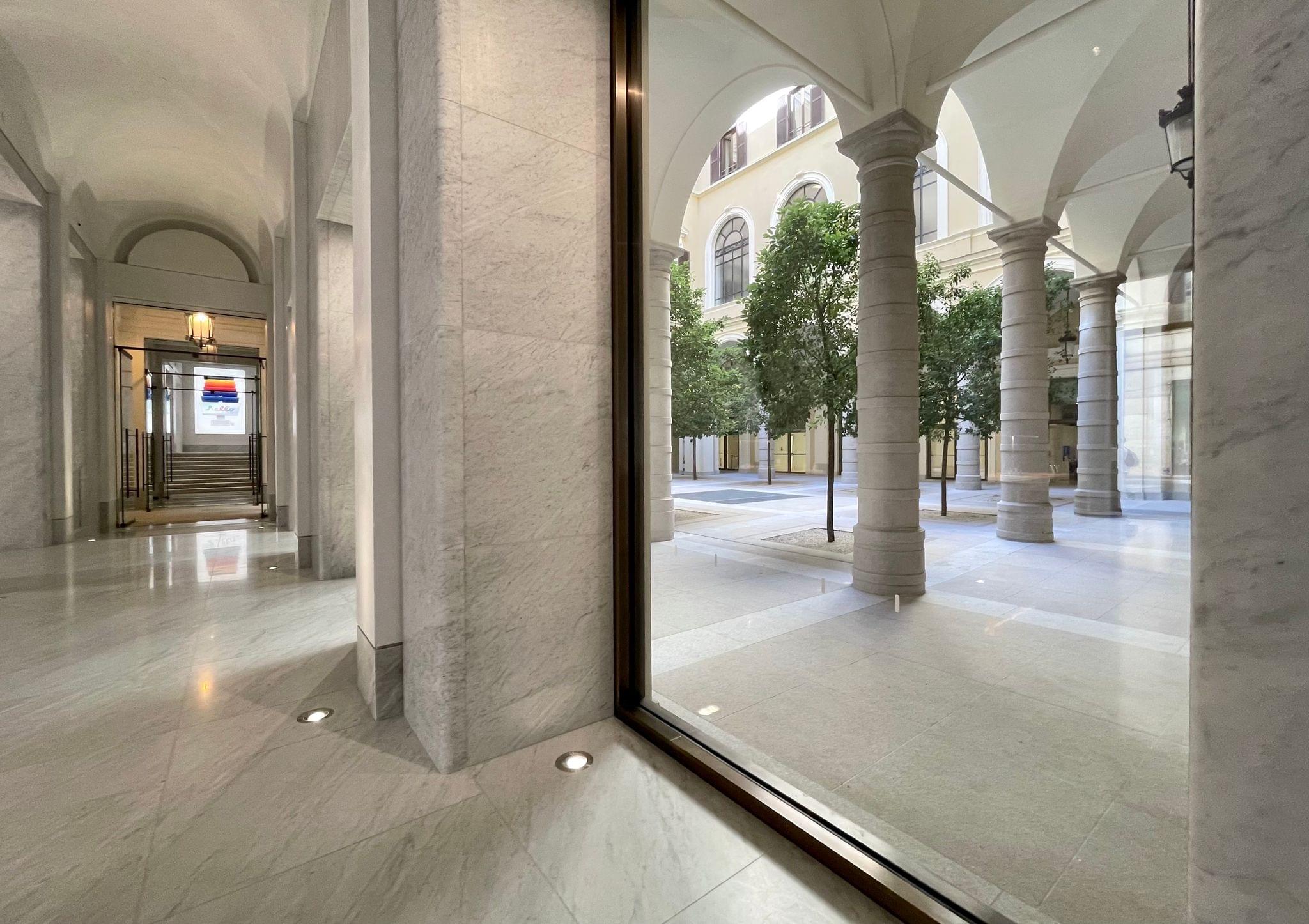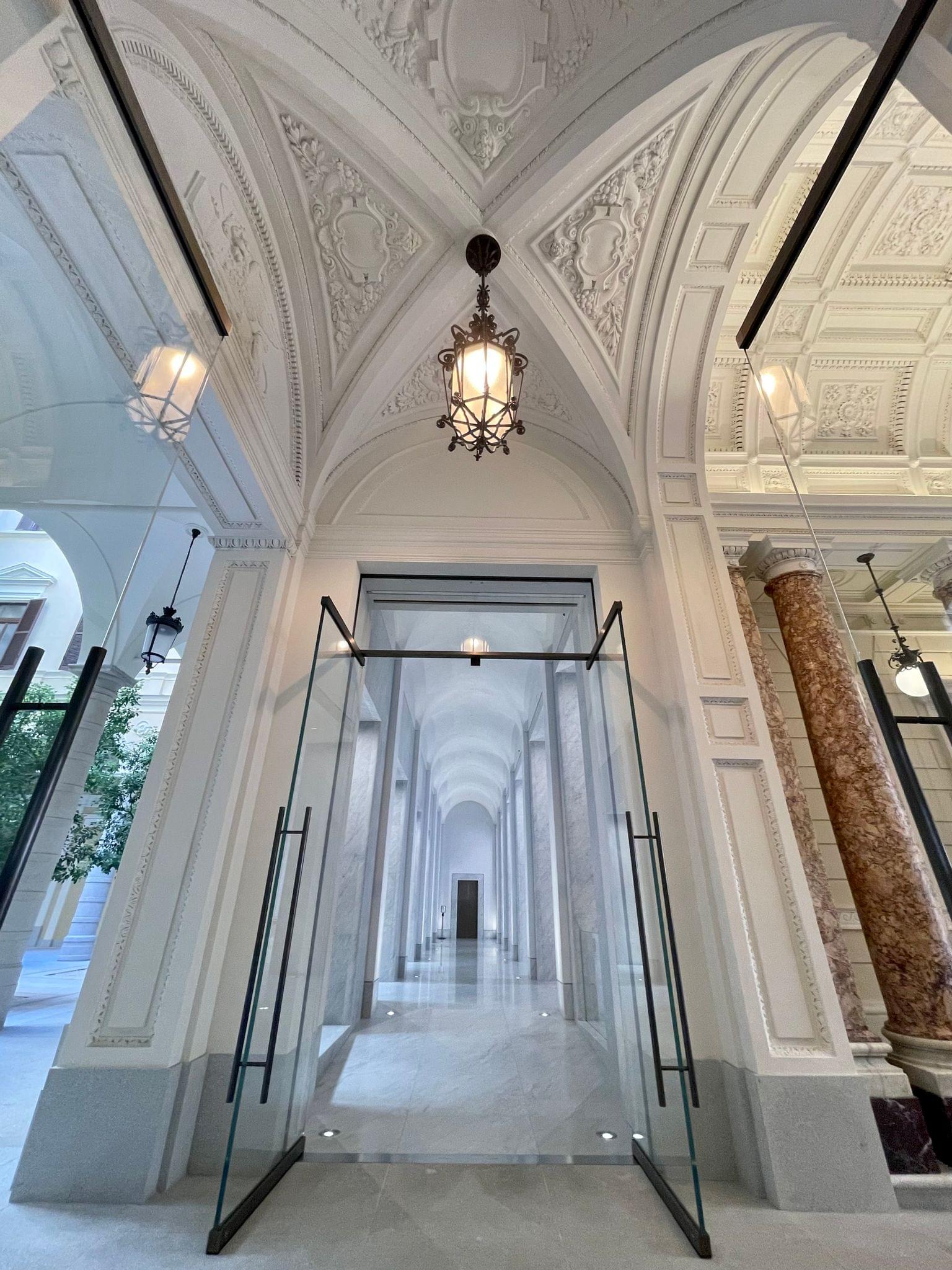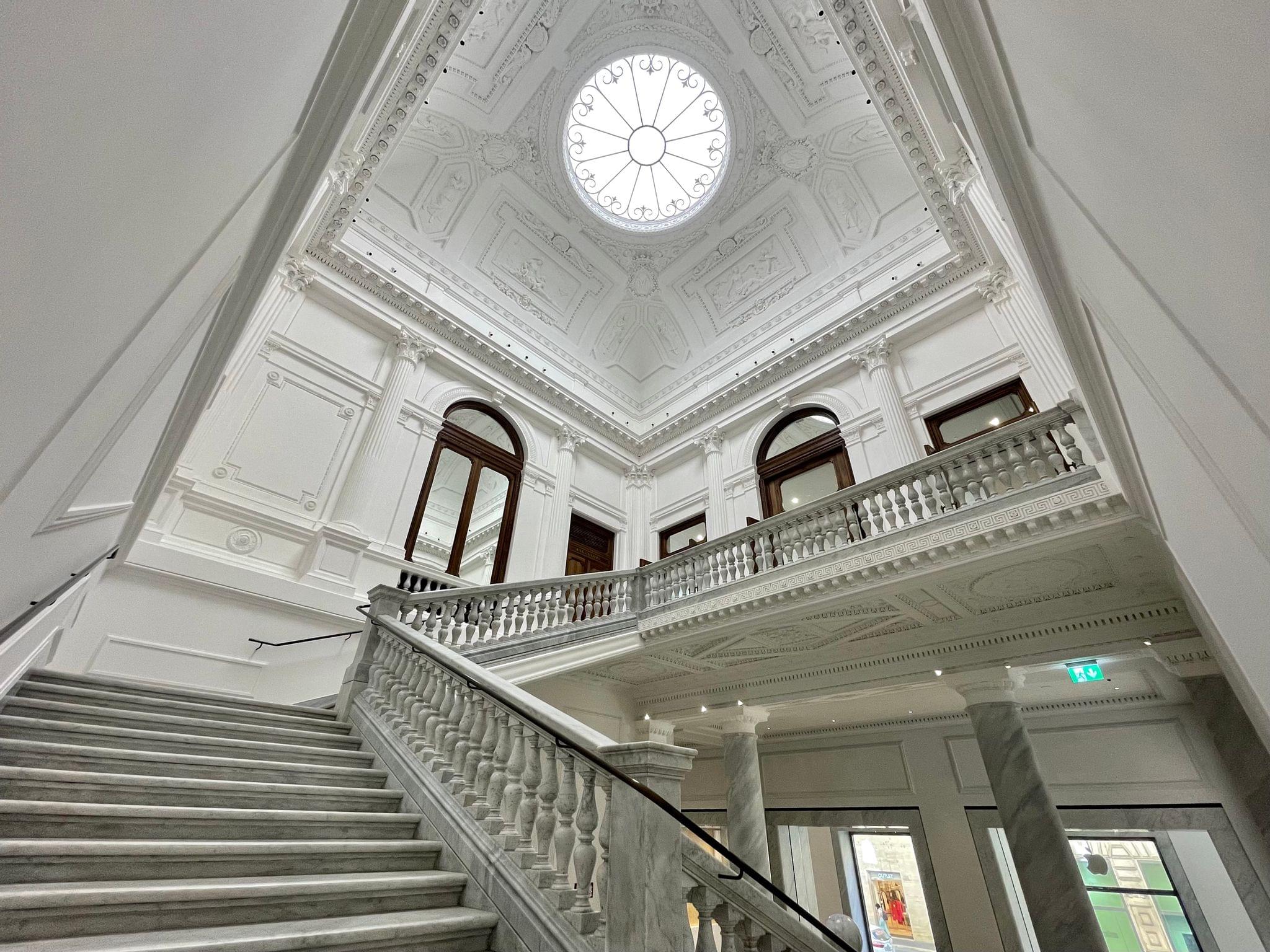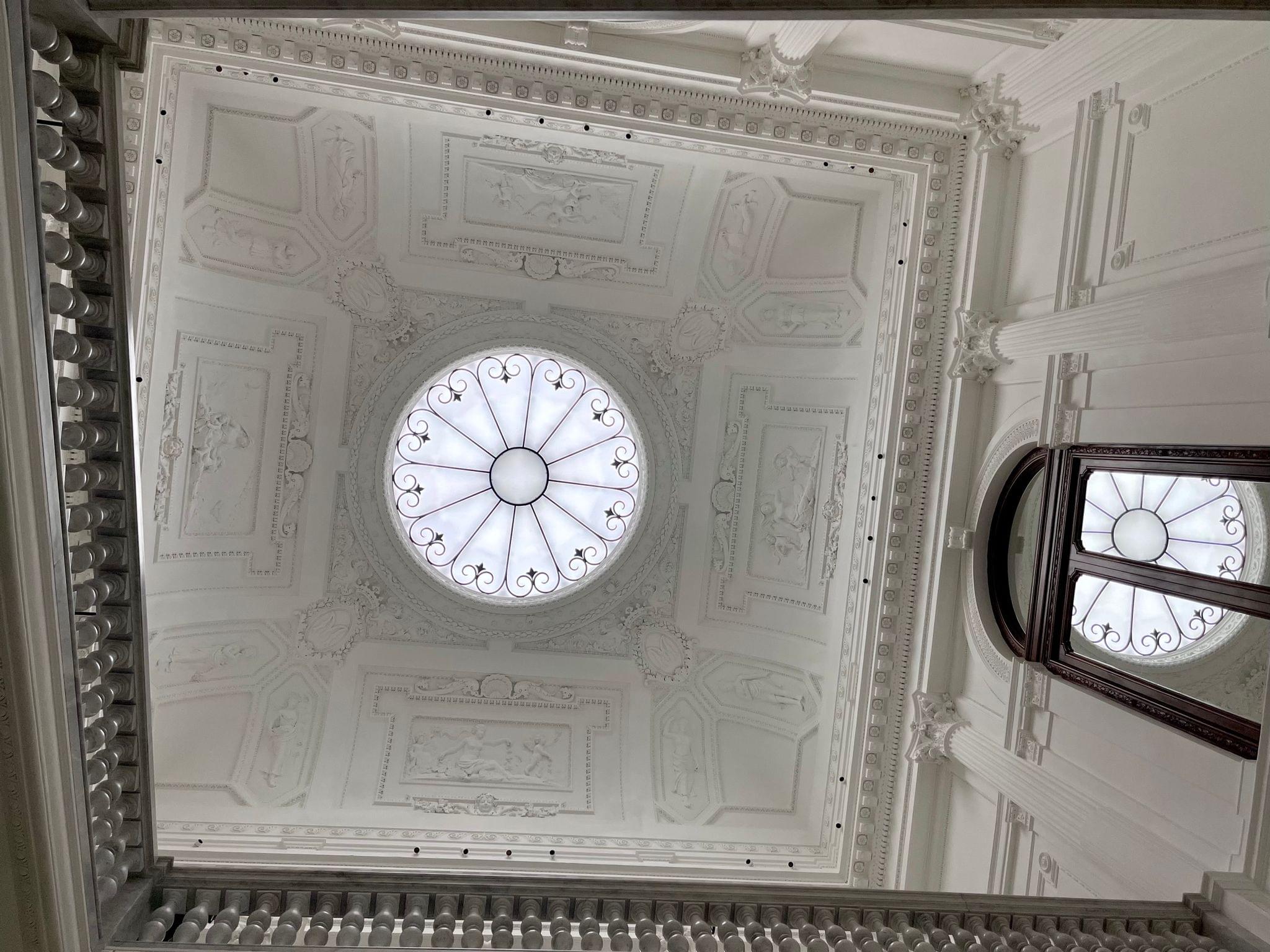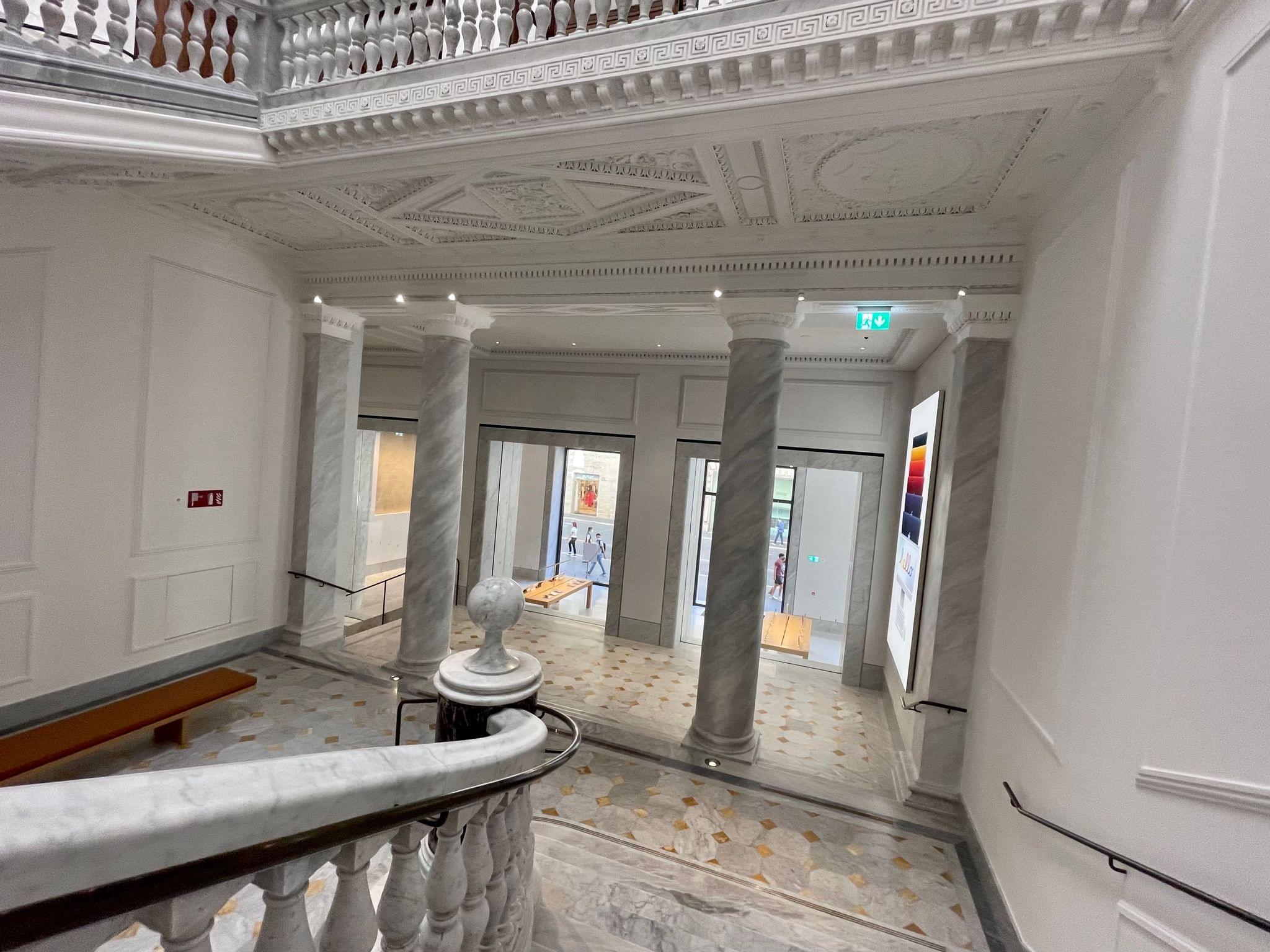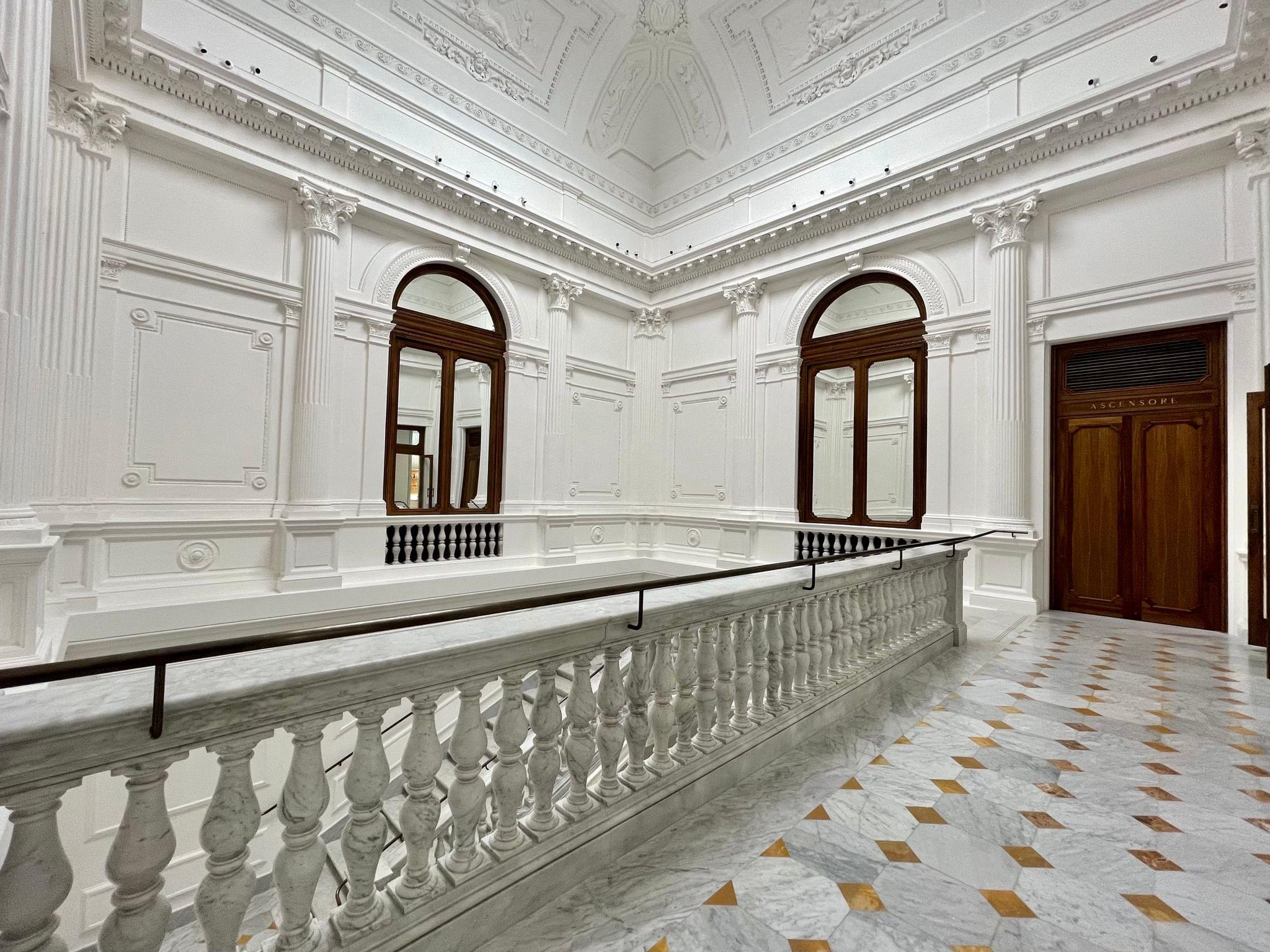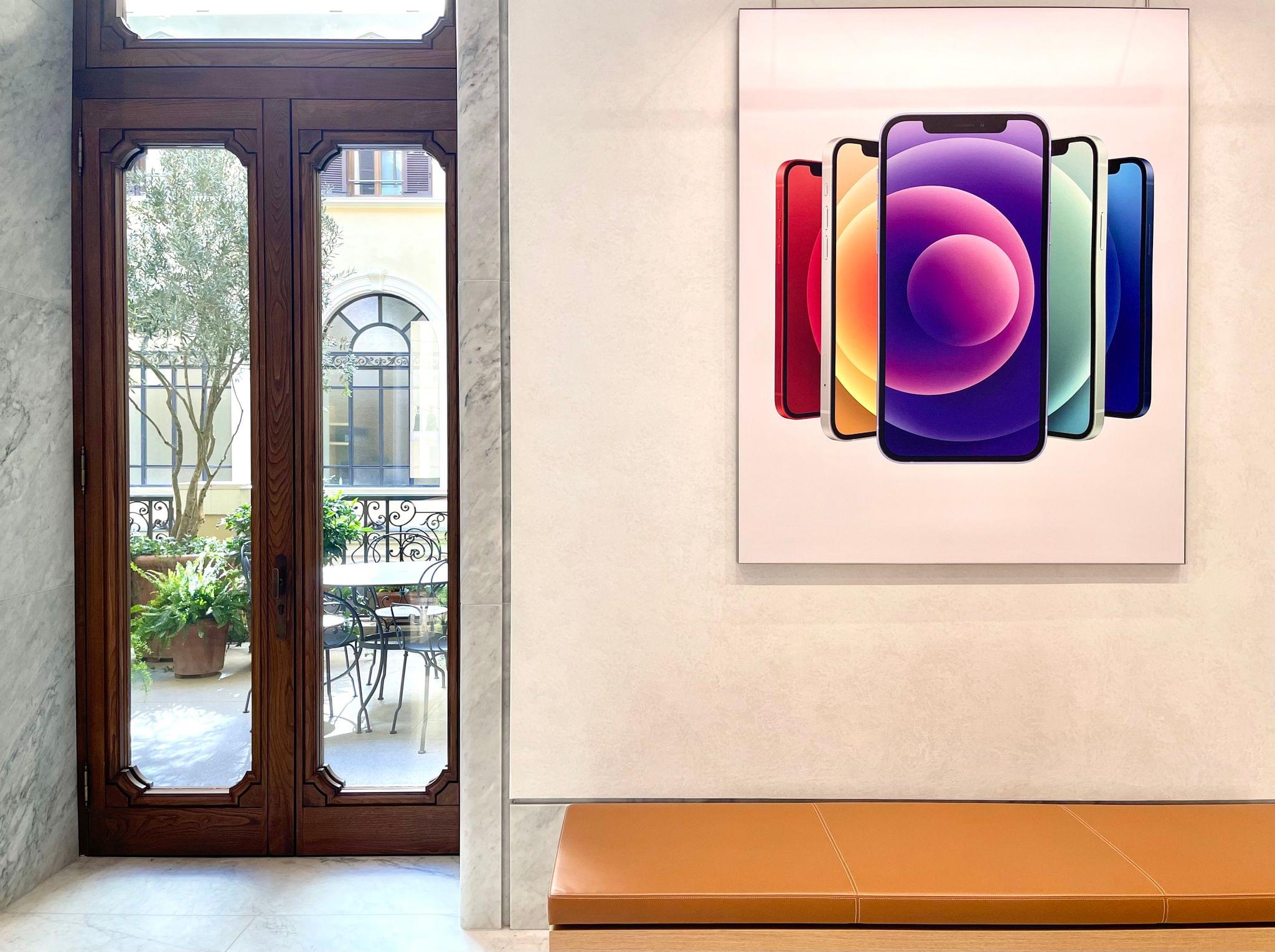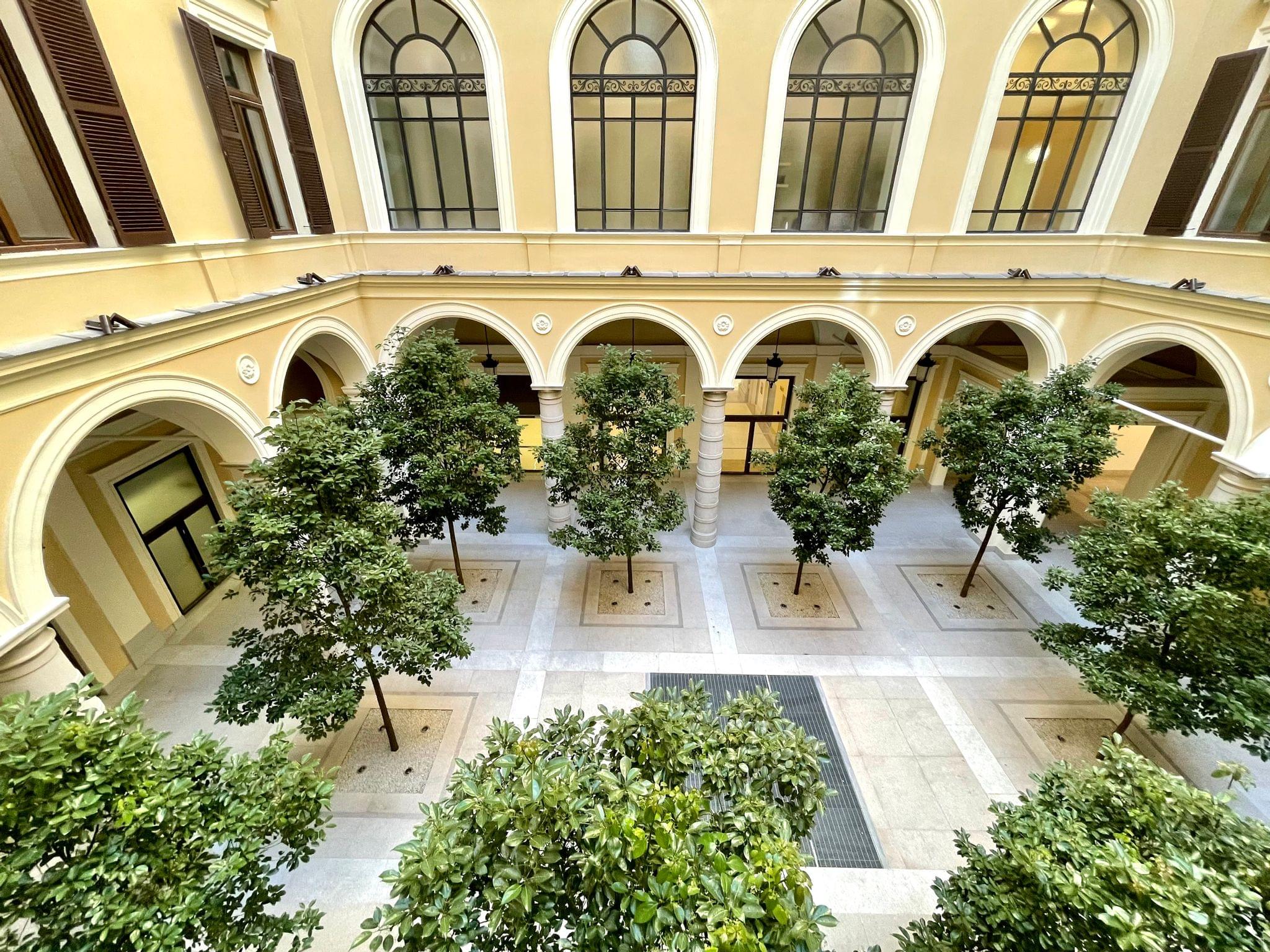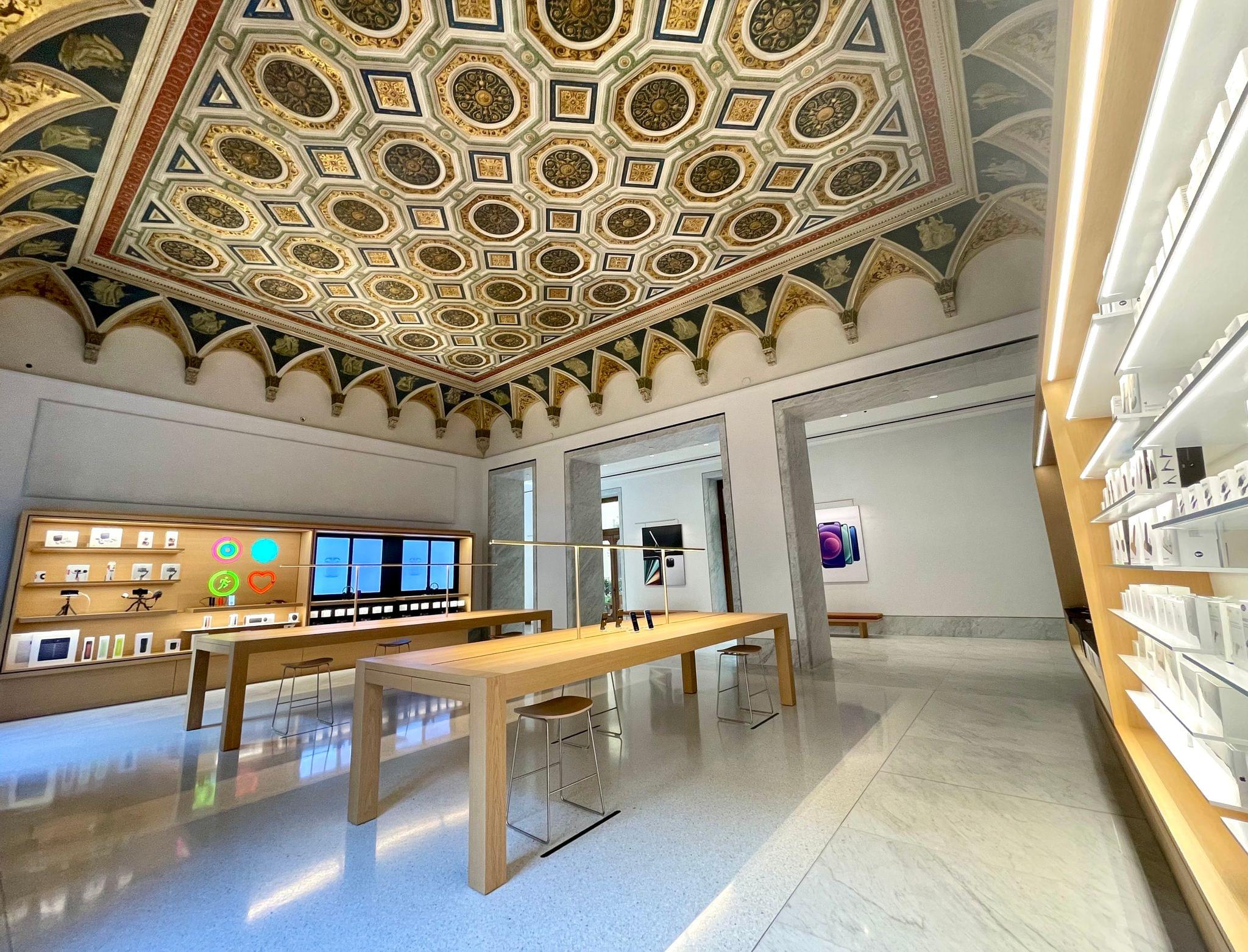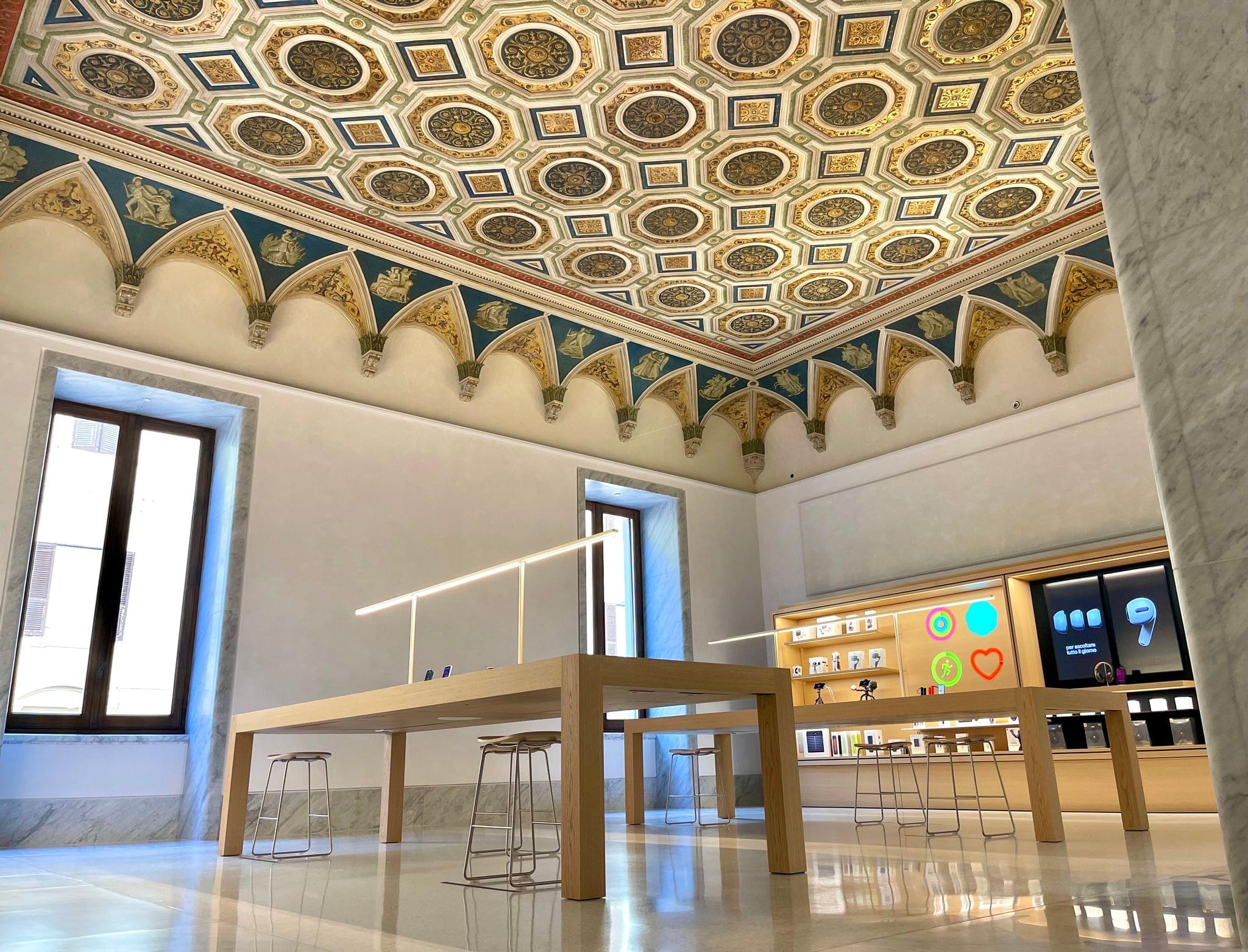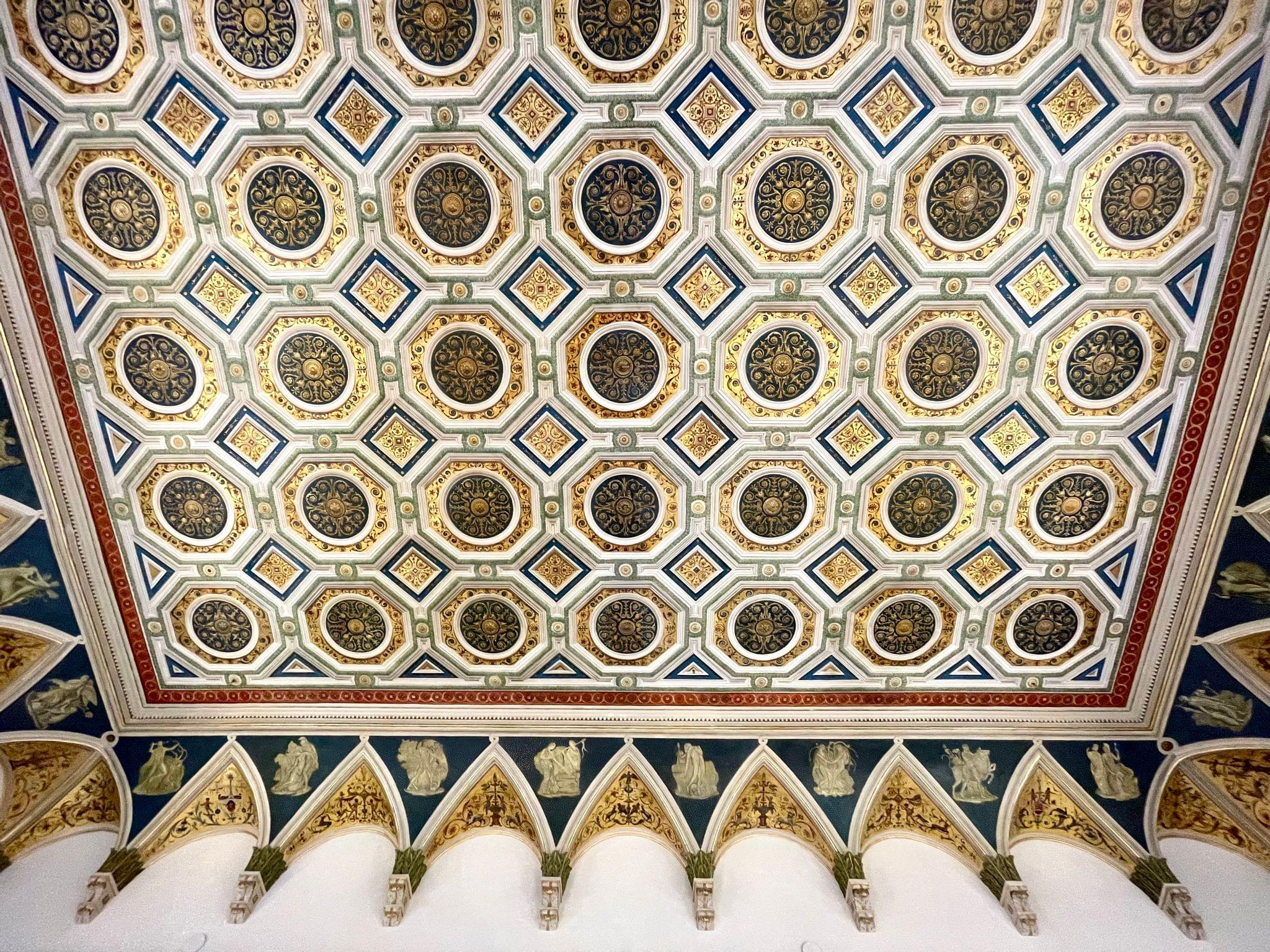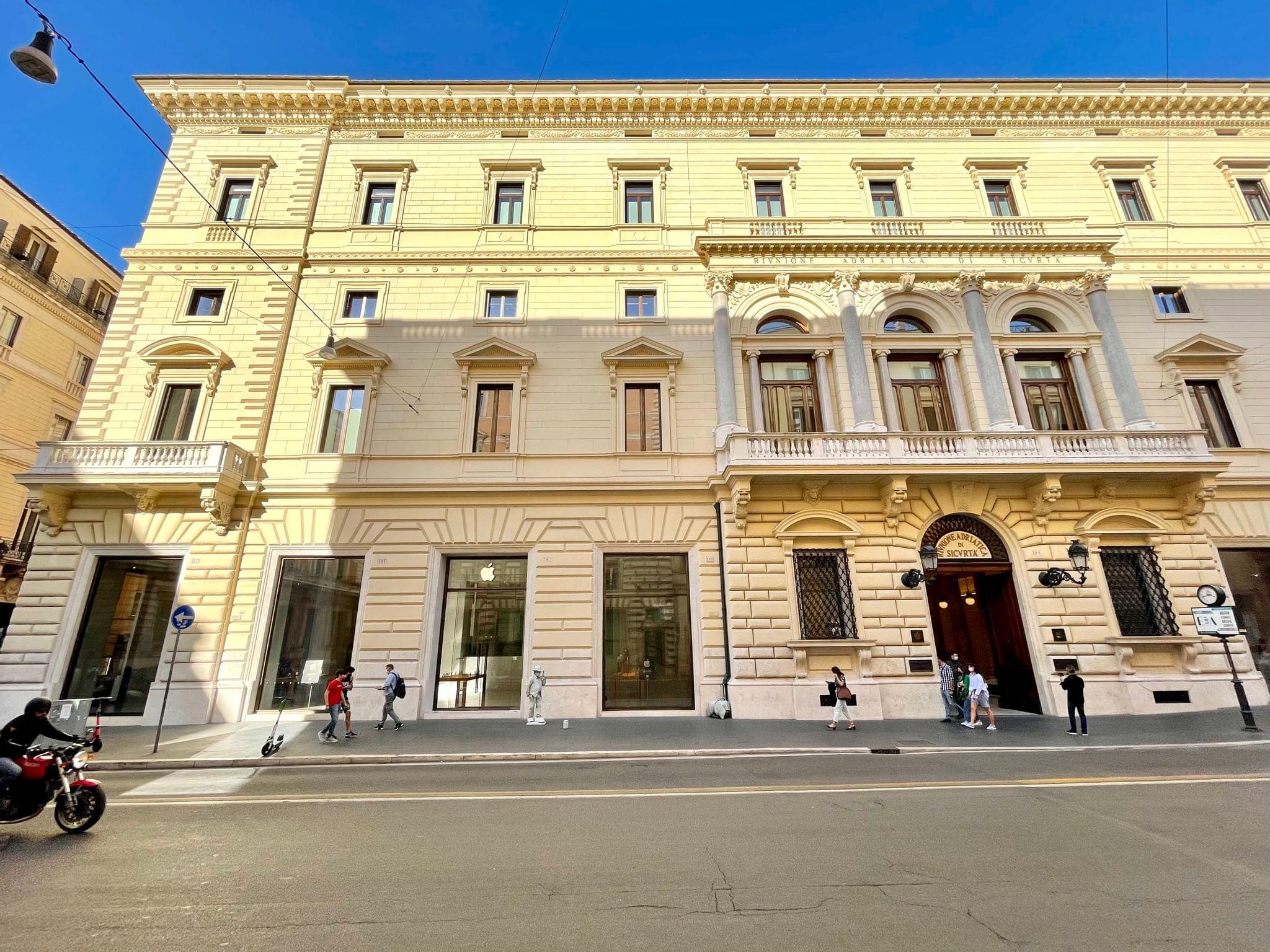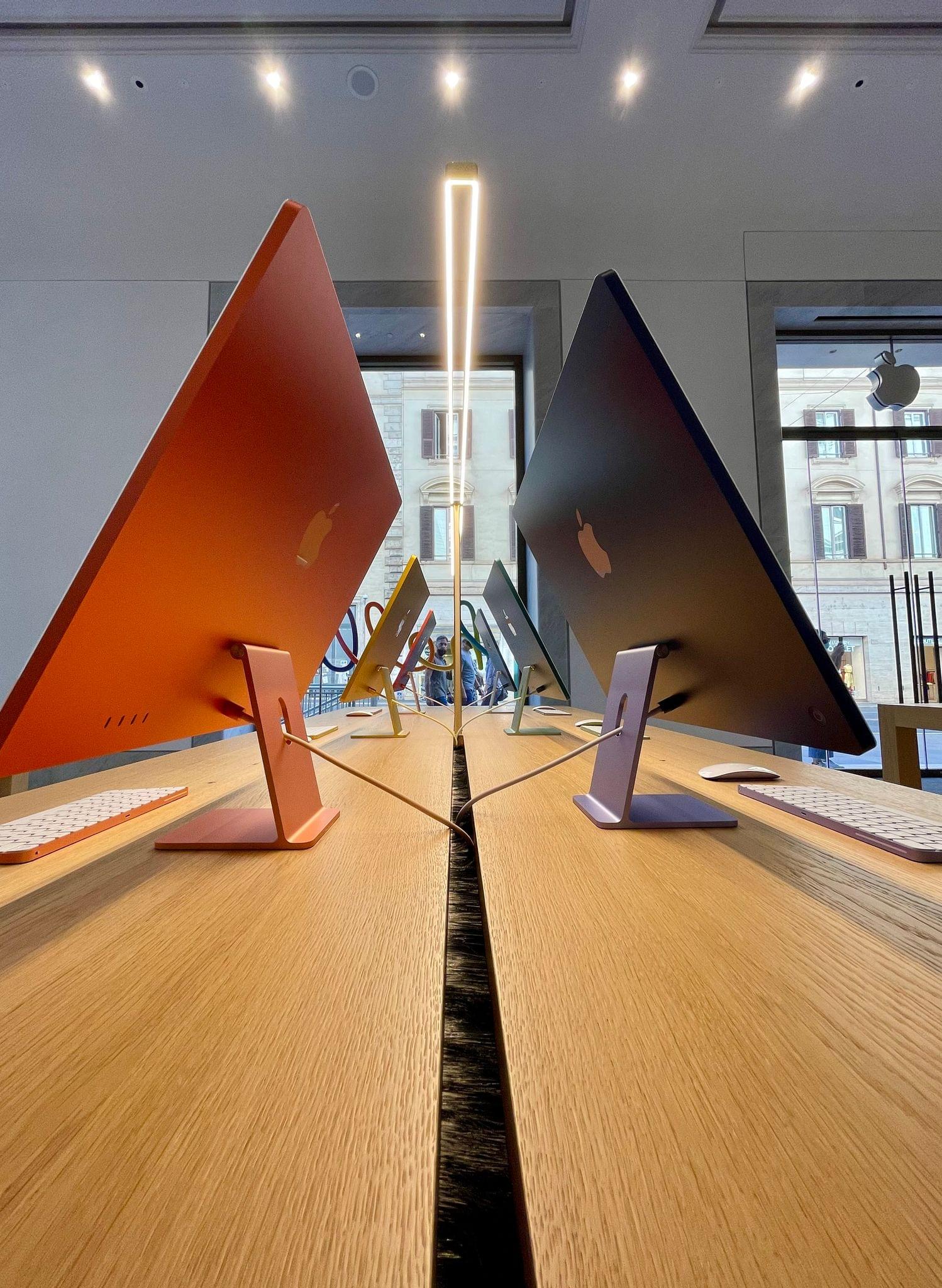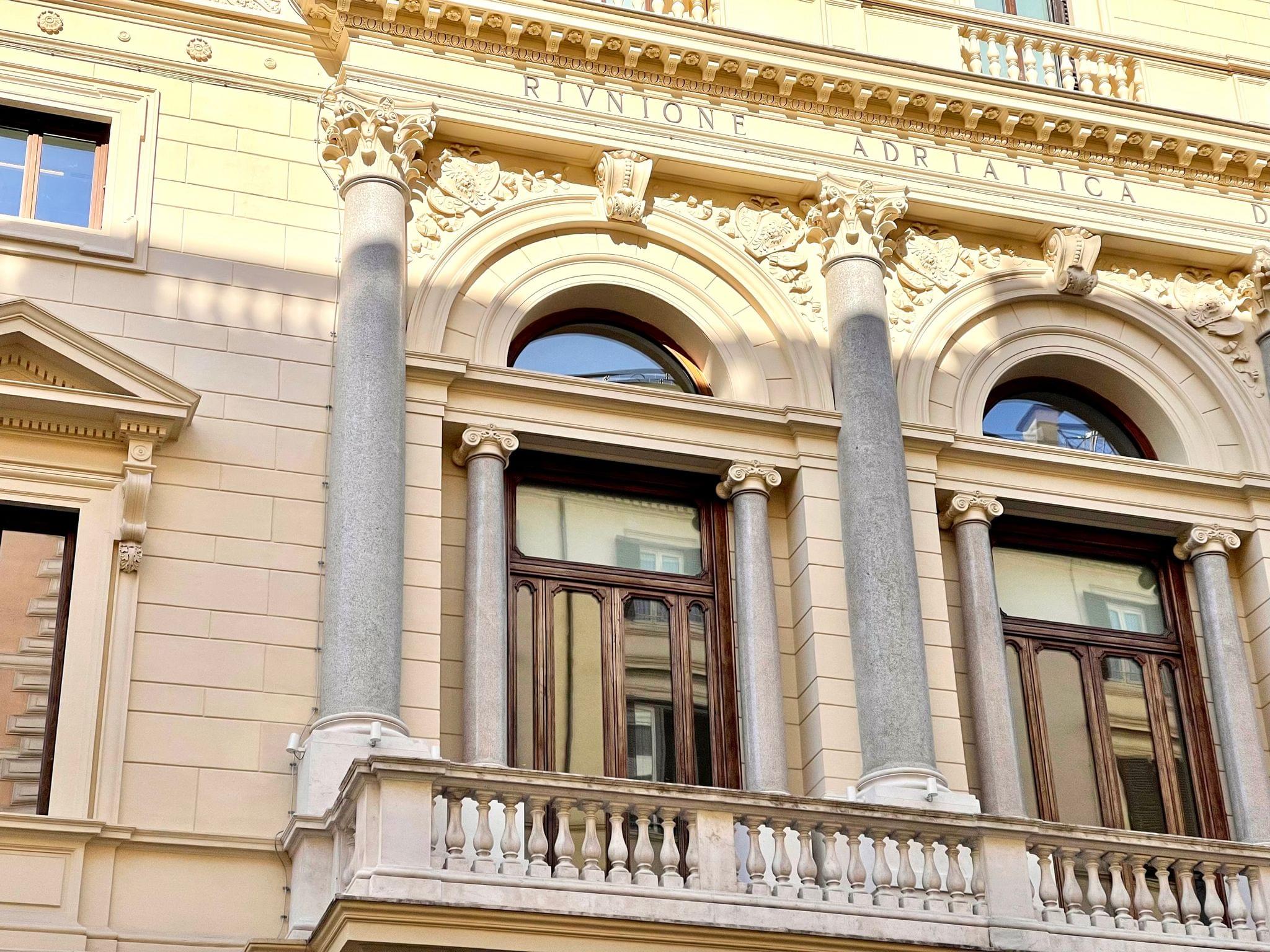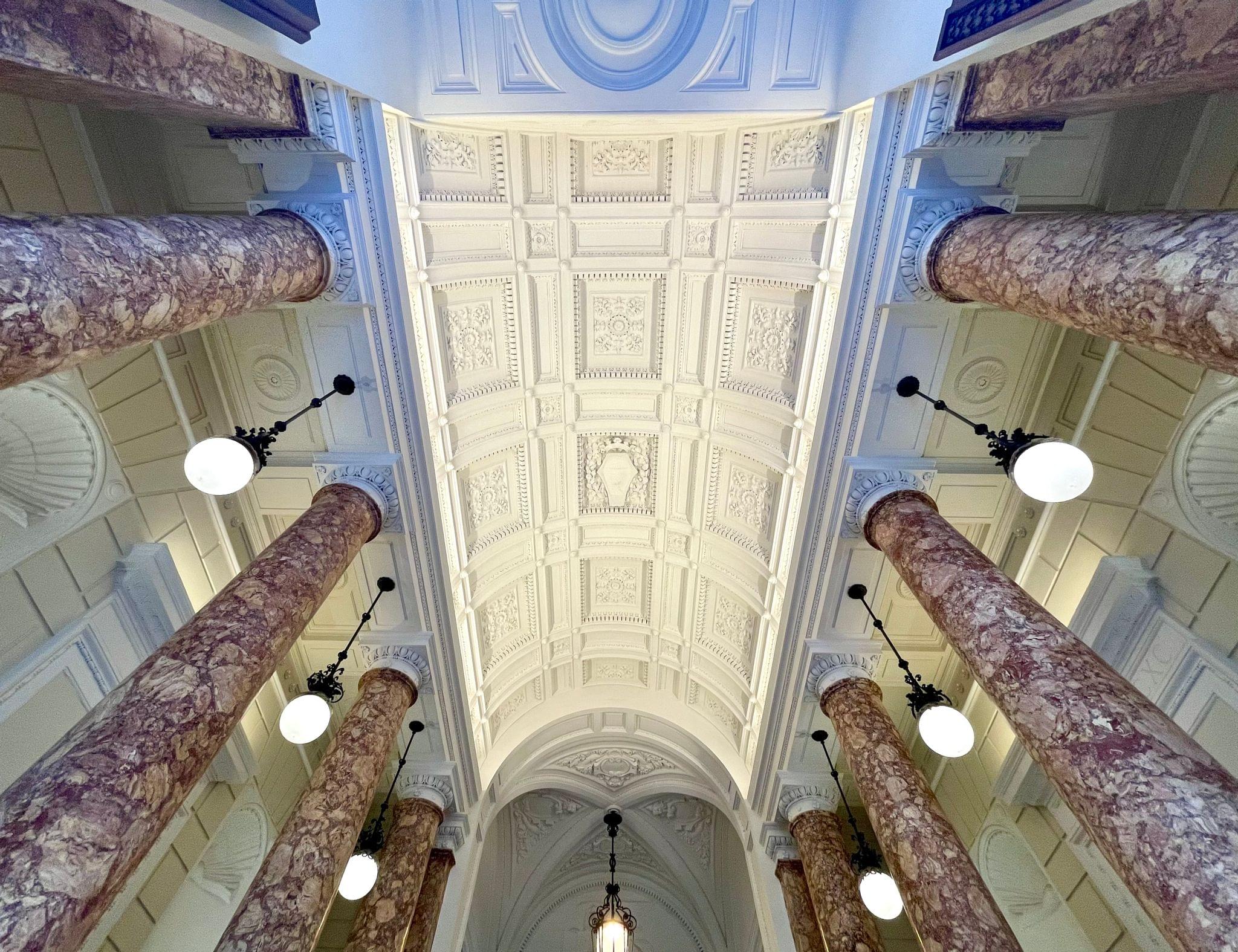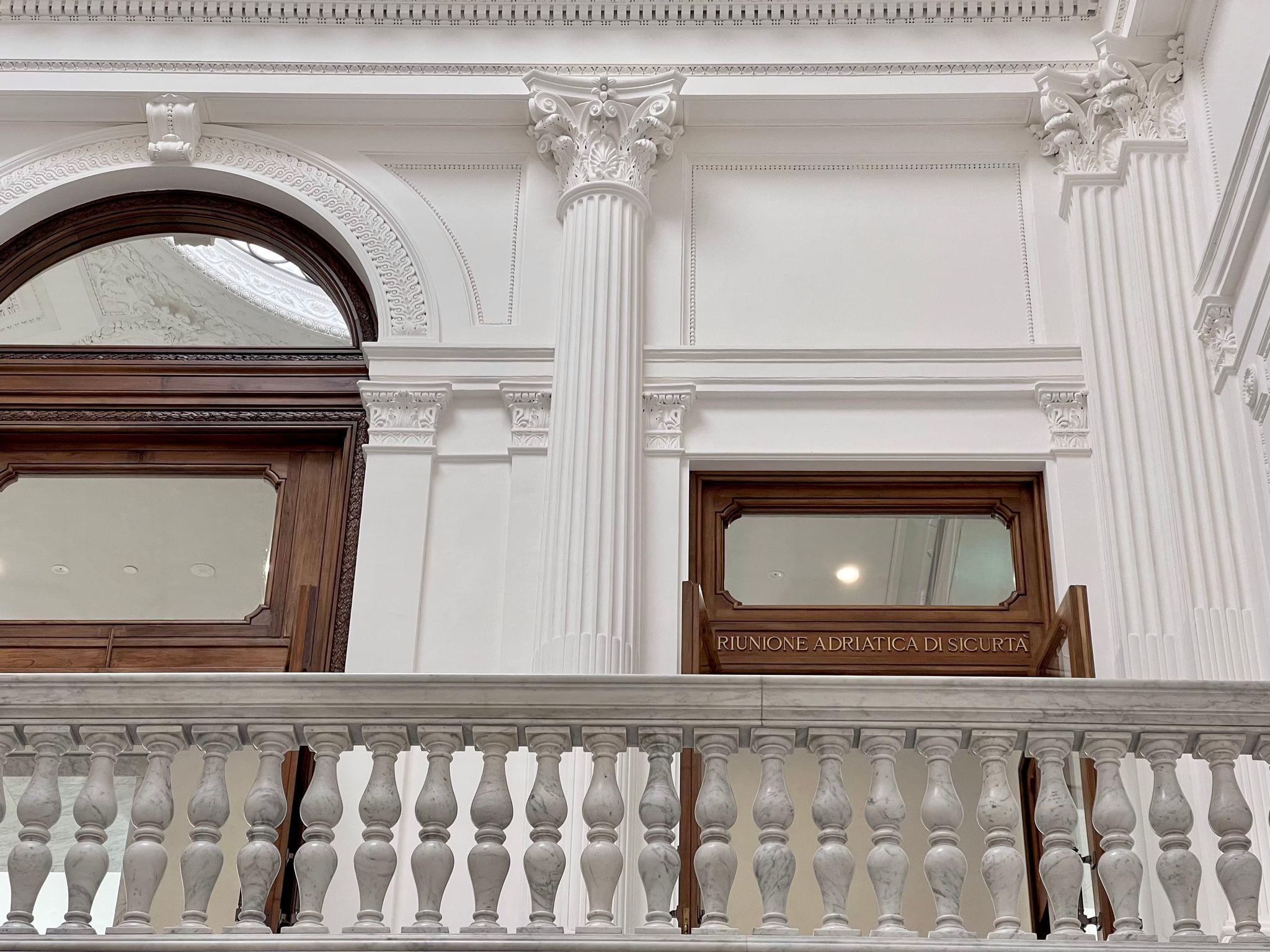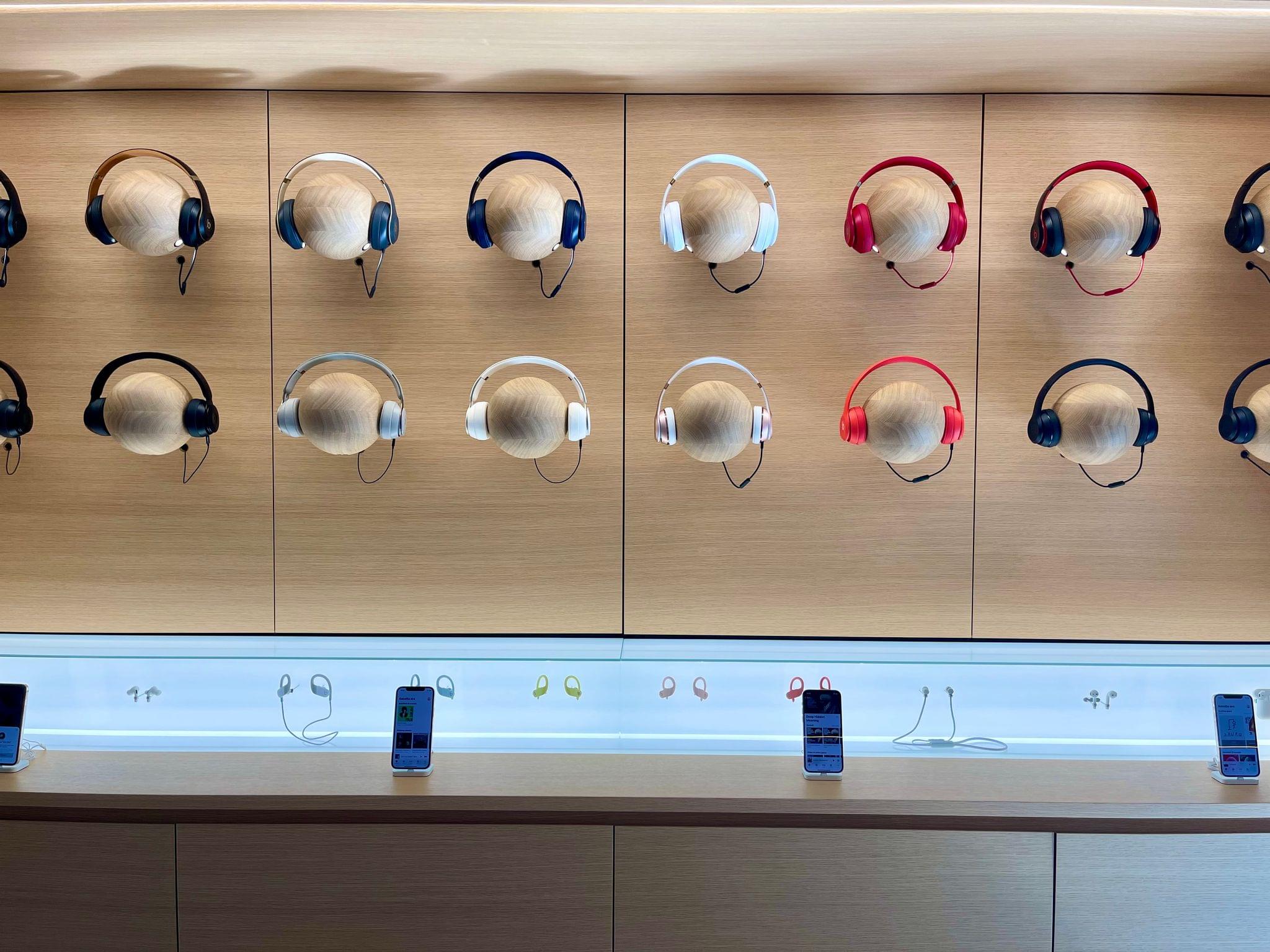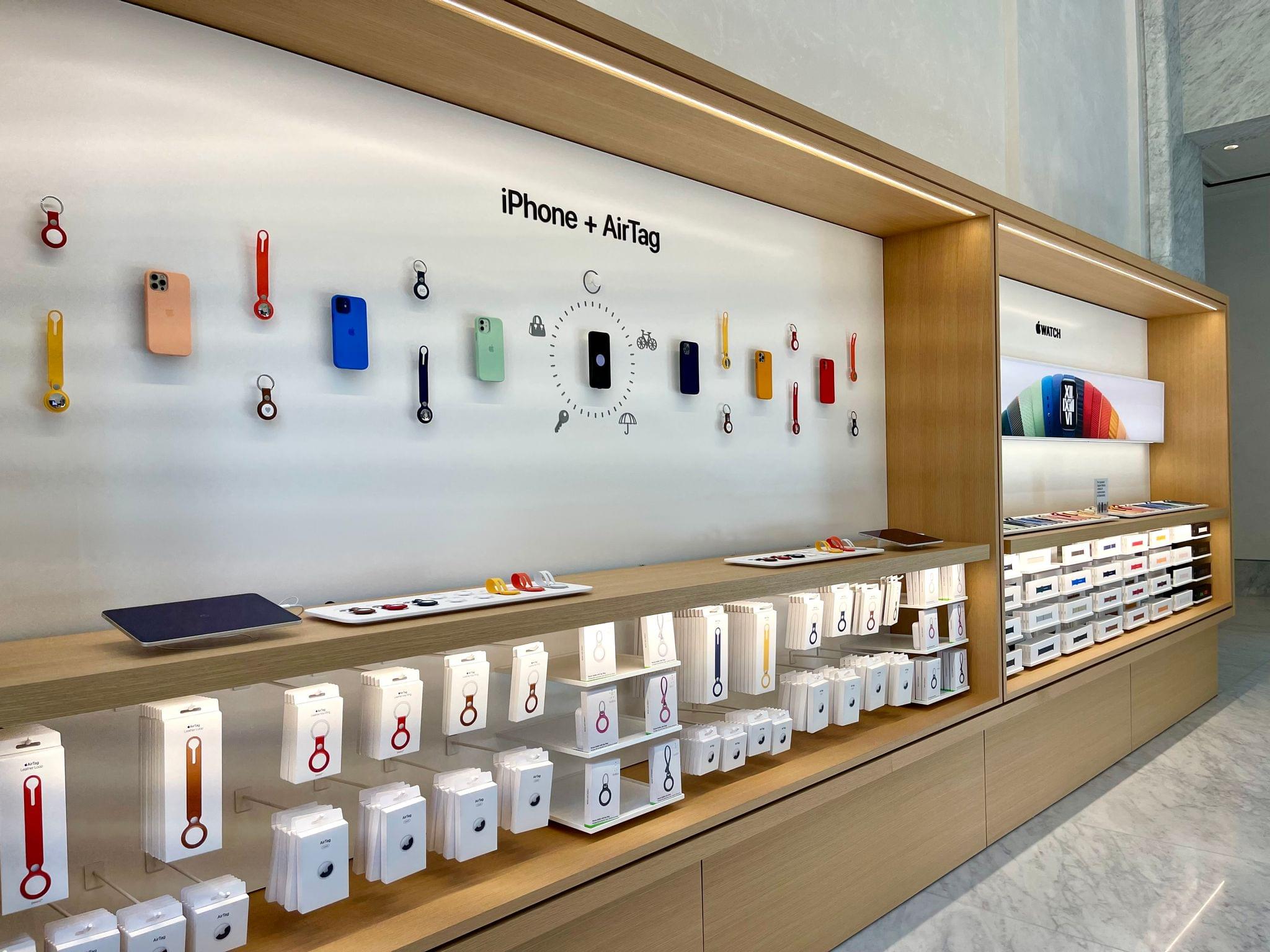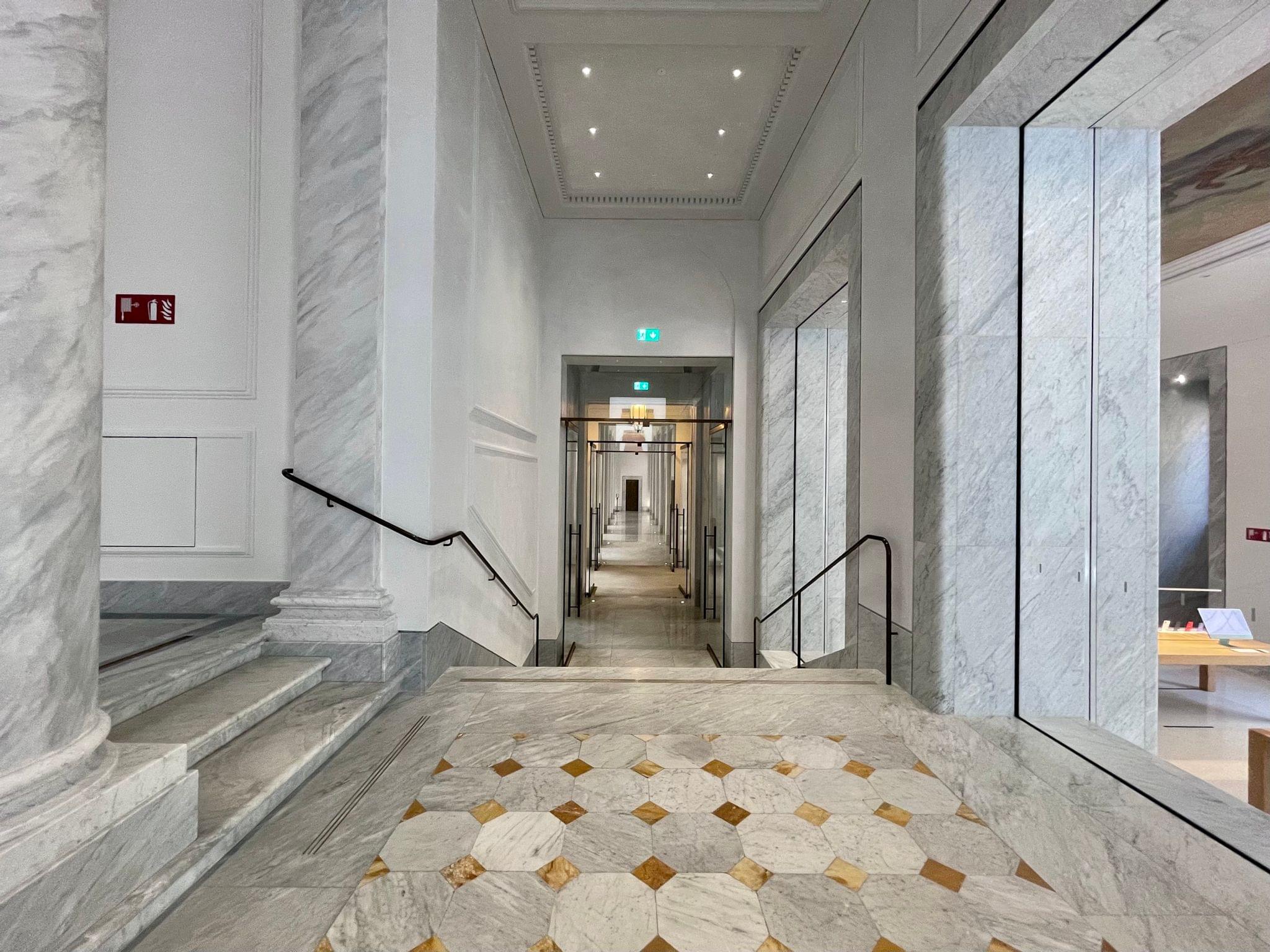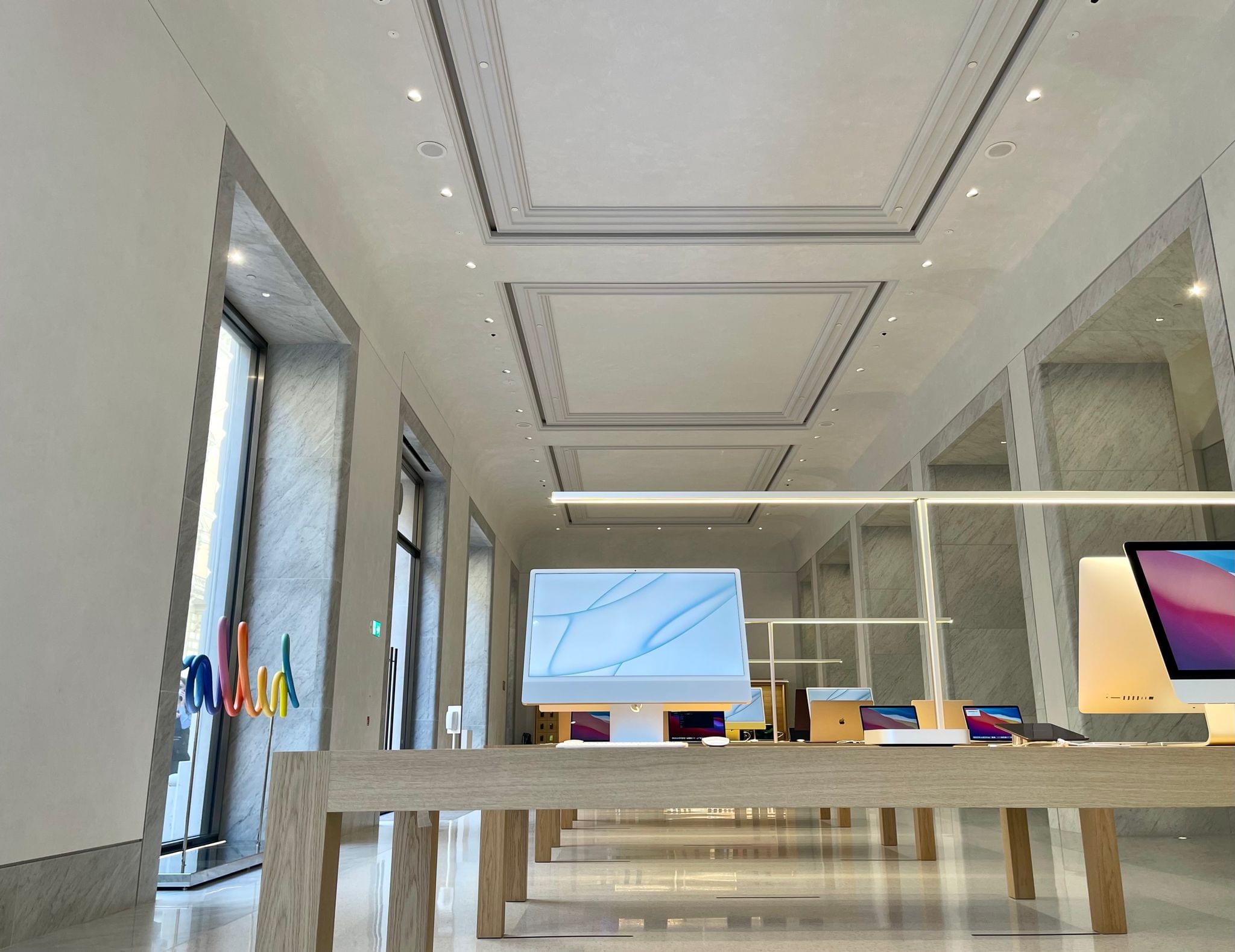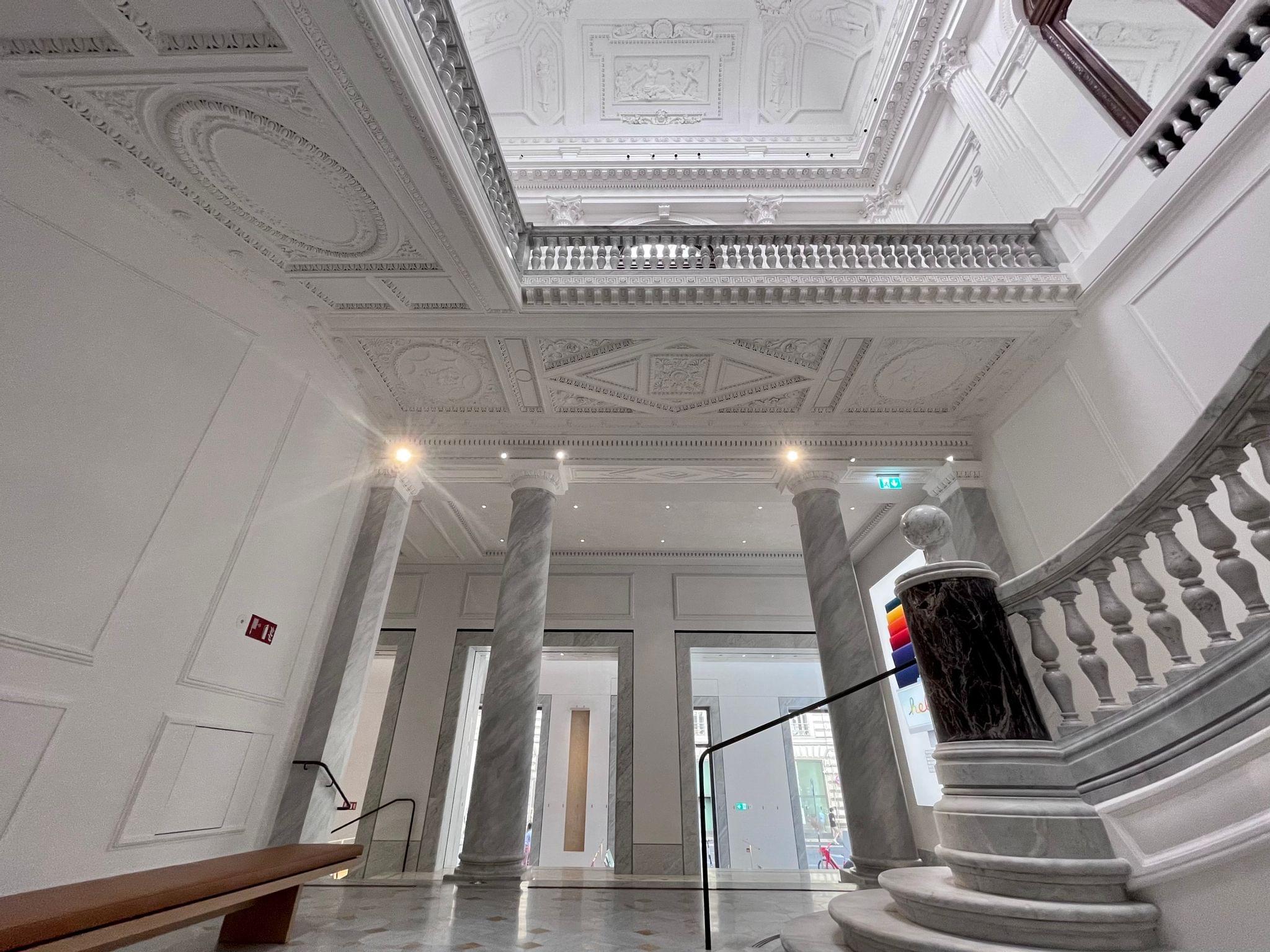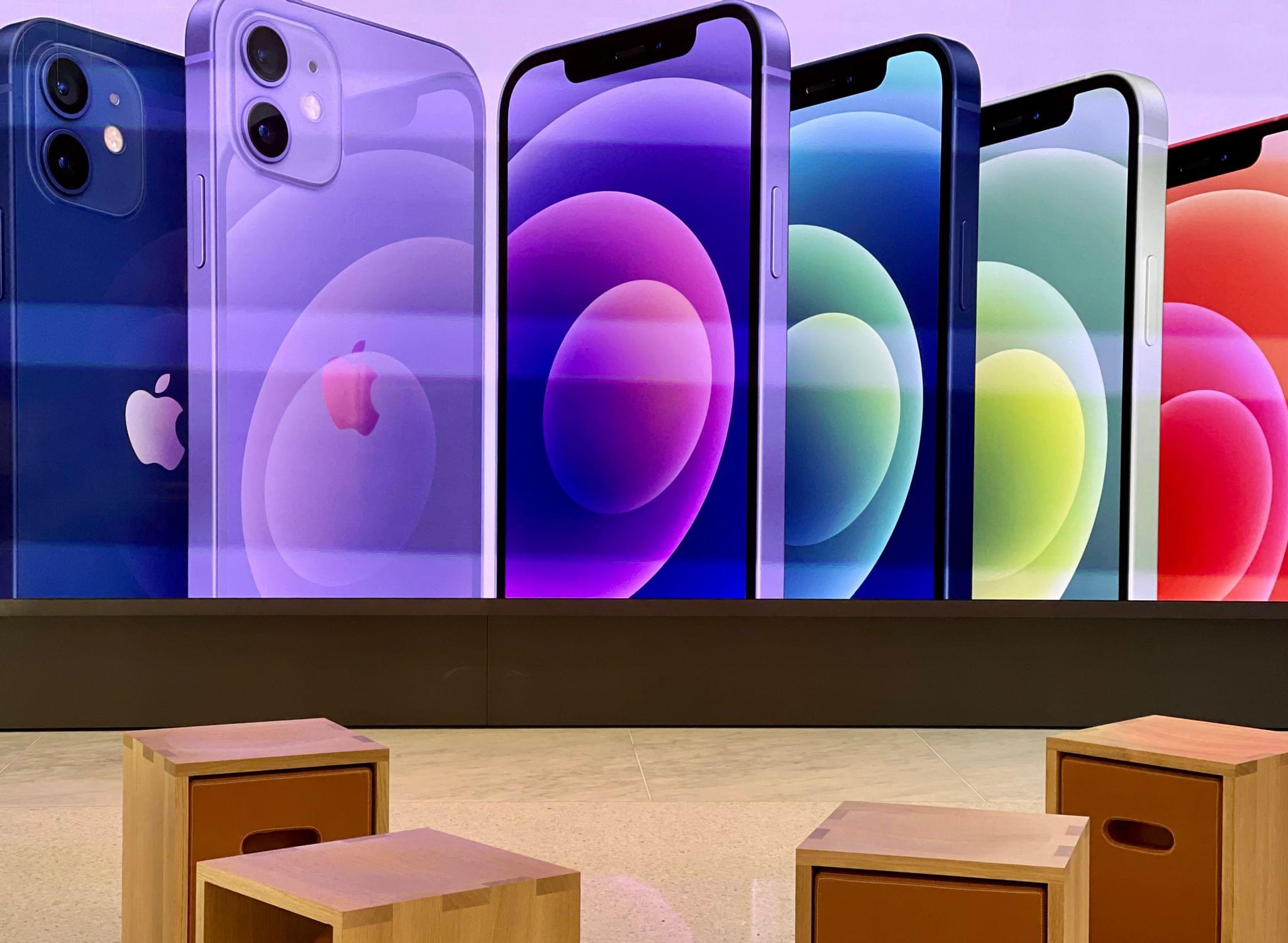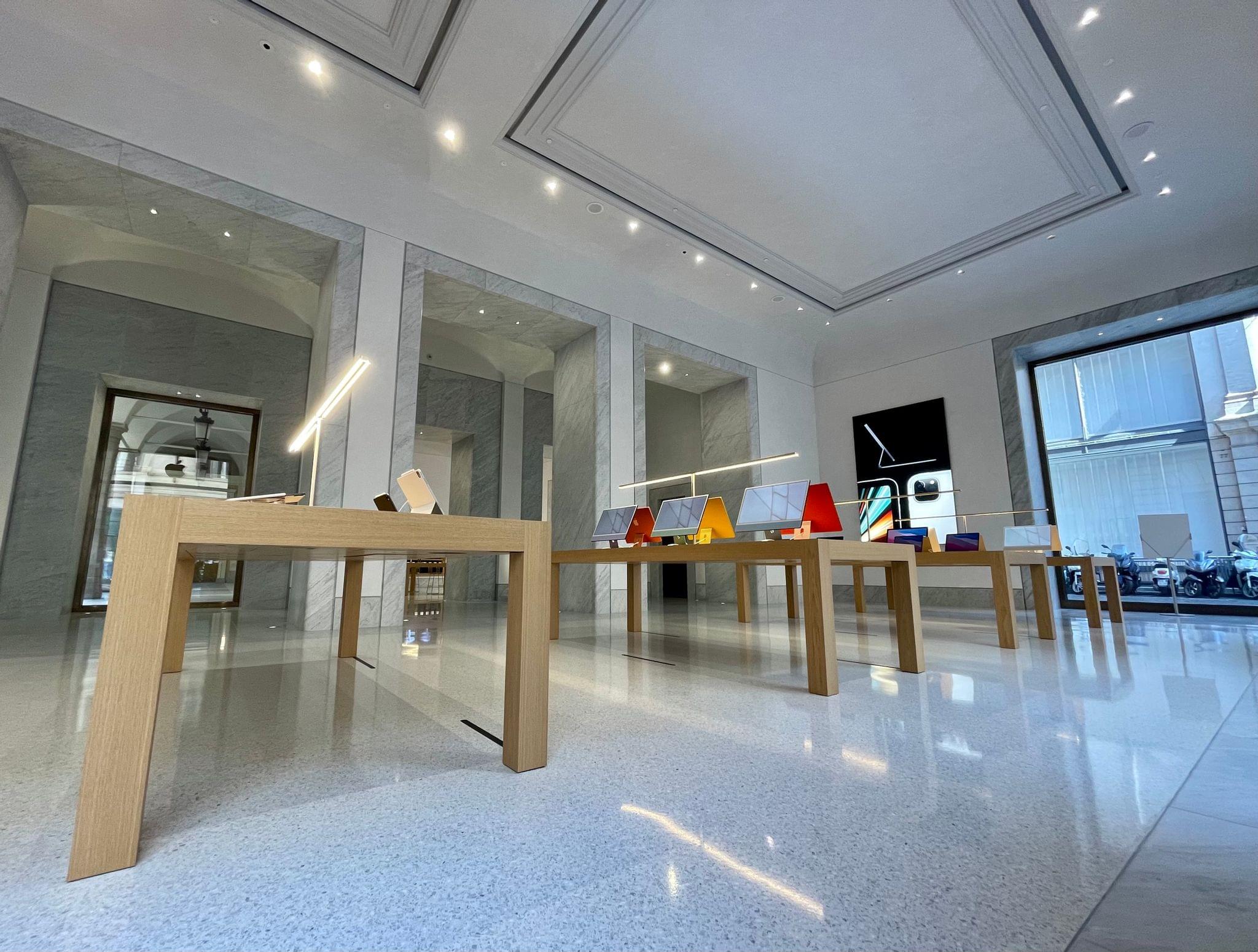Earlier today, Apple officially opened their new flagship retail store in Rome, Italy. Located on the popular Via del Corso street in the city’s historical center, the new store – which we previously covered here – is located in the historic Palazzo Marignoli, a 19th century building that has been renovated by Apple and painstakingly restored to its former glory.
I, along with our designer and photographer Silvia Gatta, was able to visit the Via del Corso store yesterday ahead of its grand opening to the public. Coincidentally, the occasion also marked the first time Silvia and I were able to visit the center of Rome free of red-zone restrictions since October 2019, when we took an amazing tour of Rome to demonstrate the iPhone 11’s camera capabilities before the pandemic hit our country in early 2020.
Besides the underlying sense of euphoria for seeing the Spanish Steps again and being around tourists for the first time in nearly 18 months, we came away impressed with what Apple has accomplished with its new Rome retail store. The Via del Corso store is an outstanding exercise in blending Rome’s rich architectural history with the modern reality of Apple’s computers and wearable devices – a challenge that the company didn’t take upon lightly, and which has, in fact, shaped the overall identity of the Via del Corso store.
Let’s take a look.
Palazzo Marignoli and Caffè Aragno
The new Via del Corso store is intrinsically tied to the history of its building, Palazzo Marignoli, which makes this store (the 17th to open in Italy) one of Apple’s most ambitious restoration projects to date. Palazzo Marignoli is located in Via del Corso 180 – a five-minute walk from more widely-known landmarks in the heart of Rome such as the Spanish Steps or Piazza del Popolo. Originally constructed in 1873 under the guidance of architect Salvatore Bianchi (who was also responsible for a major redesign of Rome’s Termini railway station), Palazzo Marignoli owes its name to Marquis Filippo Marignoli, who commissioned construction of the residence and whose requirements (such as a ballroom on the upper floor) are still visible today. Years later, the palazzo’s facade was torn down to allow for an expansion of Via del Corso and architect Giulio Podesti was put in charge of the new project.
However, before the location in Via del Corso 180 was used for Palazzo Marignoli, it was home to one of Rome’s so-called “disappeared churches” – in this case, the historic monastery of Santa Maria Maddalena delle Convertite. Rather than hide the palazzo’s origins from public view, Apple decided to pay homage to a remnant of the ancient monastery with a courtyard that serves as the green heart of the palazzo, which features tall Camphora trees and creates a fantastic contrast between greens and the palazzo’s white/gray stone. We didn’t use the main entrance, so the courtyard was the first thing we saw; it immediately suggested this store was going to be unlike anything else we’d seen in terms of Apple retail presence.
Most Romans and experts of modern Roman history, however, likely associate Palazzo Marignoli with Caffè Aragno, a historic cafe – one of the two most popular cafes in Rome at the time – active between 1886 and 1955, which was located inside the palazzo. Due to its central location and close proximity to the Chamber of Deputies, Caffè Aragno quickly became a popular gathering place for writers, journalists, politicians, actors, and all sorts of artists who used to meet up in the cafe to drink and discuss matters of politics, society, art, and more. Orio Vergani, a notable Italian sports journalist, referred to the “third room” of Caffè Aragno as “the sanctum of literature, art, and journalism”. Caffè Aragno was a big deal in its heyday, with a compelling story full of fascinating, and sometimes weird, anecdotes.
In doing my research on Caffè Aragno (which almost included purchasing copies of newspapers from the early 1900s on eBay as well), I came across two stories I have to mention here to provide everyone with some additional context on the importance of this place in Rome’s culture and history.
In 1906, due to the hot climate between anarchists and trade unionists, a bomb (likely a handmade grenade) was thrown into Caffè Aragno. Frontpages of newspapers such as Il Messaggero (which is still around and offers a public historic archive) confirm the event. But an unlikely figure of international caliber can also attest to the explosion at Caffè Aragno: writer James Joyce, who happened to live nearby Caffè Aragno at the time (in Via Frattina); as he wrote in a letter to his brother Stanislaus (Stannie), he “felt the house shake” and heard people running and yelling “Bomba! Bomba!” in the streets.
The second Caffè Aragno story is, quite possibly, the most Italian thing I’m ever going to publish here on MacStories. In 1926, following a series of literary disagreements, while talking inside Caffè Aragno Italian writer and poet Massimo Bontempelli slapped another famous writer and poet, Giuseppe Ungaretti. The slap eventually led to an actual sword duel later in the year at the Rome residence of another poet and dramatist, Luigi Pirandello. Unfortunately for him, Ungaretti lost. (Don’t worry, he didn’t die in the duel; he only suffered a minor injury on his right forearm. Ungaretti: great at poetry, bad at slapping and sword-dueling, it appears.)
Now, I’m not sharing these stories only because they’re odd and amusing (but they really are and I couldn’t help myself). My main point here is that, as a citizen of Rome who’s interested in the eternal city’s history, I was concerned that, in taking over Palazzo Marignoli, Apple was going to swoop in, put up a bunch of computers and displays, and completely disregard the palazzo’s history to serve their corporate strategy.
After all, my concern was justified: after the closure of Caffè Aragno, the palazzo was used for a series of fast food restaurant chains over the subsequent decades. I connected the dots on this a few days ago: when I was a kid in the late ’90s, whenever my parents took me to visit Rome we’d eat some pizza and fries at this restaurant chain called ‘Spizzico’ in Via del Corso. Because other parents and teachers responsible for students on school trips had the same idea, the place was always loud, dirty, and smelly. But it was cheap, and the pizza was passable, and it was very central without being a tourist trap, so we kept going there over the years. As I discovered a few days ago, that place was Caffè Aragno – the same building Apple has been renovating and restoring for the past few years. I thought that was a fun coincidence.
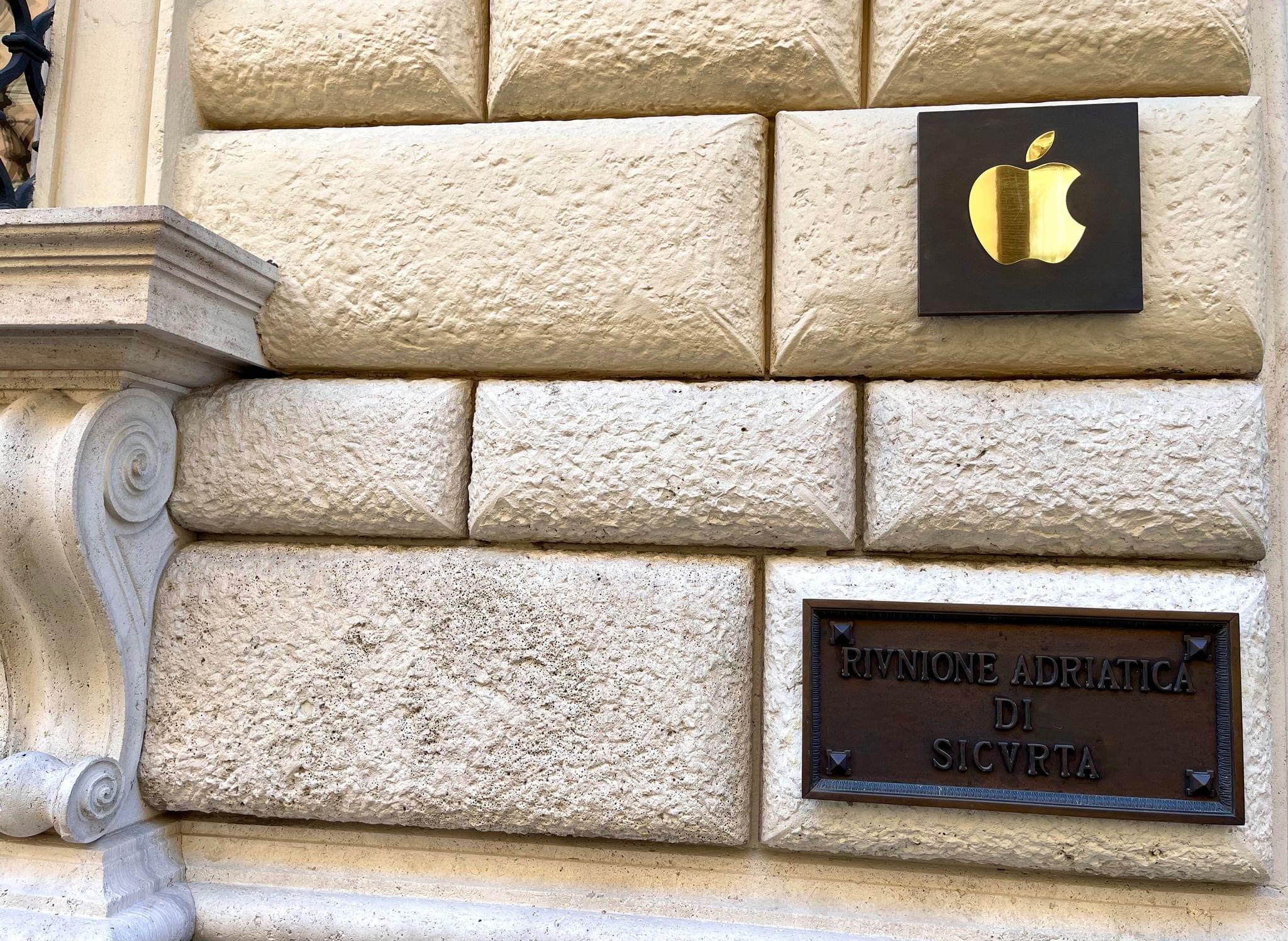
Fun fact: Apple and its team of restorers had to deep-clean the facade of Palazzo Marignoli to bring back the original color after years of negligence.
But back to Apple. Here’s the great news: not only was the company able to restore Palazzo Marignoli to its former glory, but they also meticulously preserved and revived the artistic heritage of Caffè Aragno by working with a team of local restorers for the past few years. Apple isn’t new to challenging restoration projects (as previously seen with Apple Champs-Élysées in Paris, Regent Street in London, and Carnegie Library in Washington, D.C.), but the results in the Via del Corso store are simply exquisite. Apple and its teams of restorers were able to revive and restore (in their original location) two long-hidden ceiling paintings that date back to the early 1900s – Fabio Cipolla’s “Dawn” and Ettore Ballerini’s “Dusk”. Both paintings are immediately visible by looking up at the massive 6.5-meter tall ceiling in the room where the main entrance is located. The same room features six urban-themed graffiti dating back to 1950 by Afro Basaldella, which have been restored by Apple and incorporated in the room’s white walls.
The unique combination of tradition and modernity based on the harmonious contrast between old and new – a recurring theme throughout the whole Via del Corso experience – is tangible and thoughtful. You’re in a palazzo that was built in 1880, looking at paintings from the early 1900s and graffiti from 1950, all while browsing around tables featuring M1 iPad Pros and colorful iMacs. Somehow, it all works together and it’s stunning to see in person.
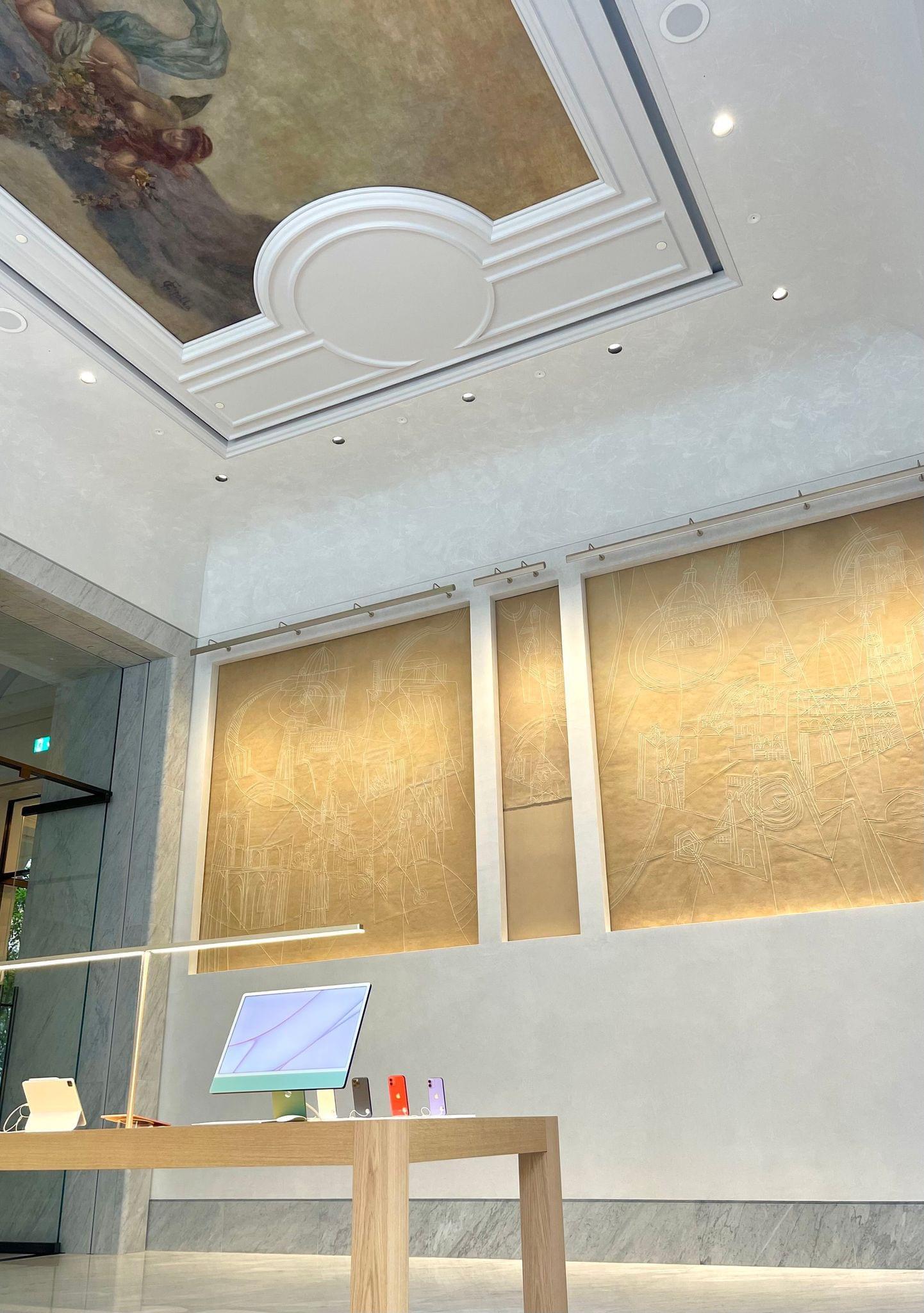
I don’t know if it’s intentional, but there’s a nice continuum between the restored graffiti and the iMac’s line-art screensaver.
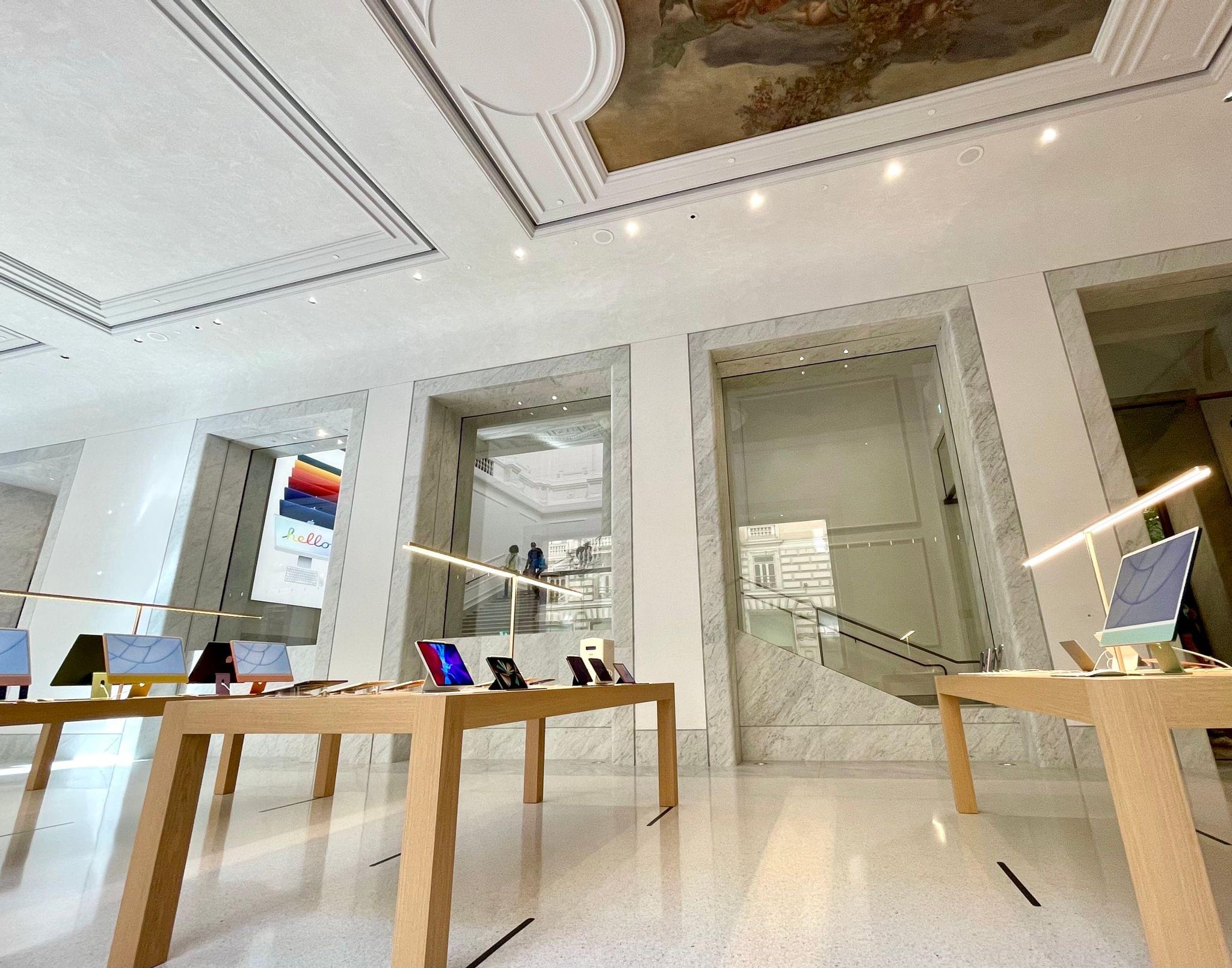
From the main showroom, you can walk to the monumental staircase (pictured in the background), which connects the store to the upper floor.
Unlike the palazzo’s former occupants, Apple isn’t trying to hide its history: the company is celebrating it and embedding it (and Rome’s cultural roots in the process) in its own products and experience. With this store, Apple is telling the story of its products as tools for creativity as much as they’re honoring the creativity that once stemmed from Caffè Aragno and Palazzo Marignoli.
Walking Around a Store-Museum
In walking around the Via del Corso store and exploring its upper floor, I think it’s easy to feel like you’re visiting a museum more than a retail store. The ceilings are tall (roughly three times what you’d see in a regular apartment here in Rome), and because Apple used Carrara marble for detailing work (which has been integrated with the original stone from the 1880s), everything is very bright, polished, and refined. You can tell there’s a lot of history to the place that’s just as important as the products themselves. From the long colonnade that connects two showrooms (running along the courtyard) to the restored monumental staircase (which dates back to 1888) leading you to the upper floor, it’s almost as if the palazzo becomes a meta-product of sorts – a new type of gathering place that acts as a conduit to the modern Apple experience.
The large street-level windows let plenty of sunlight into the store, but they also create a sense of continuity between the city of Rome and its bustling Via del Corso and Apple’s work on the restored Palazzo Marignoli. Besides its appearance, Palazzo Marignoli as an Apple store feels very different from the restaurant chain it used to be: in the three hours we spent exploring it yesterday, I got the sense that Apple wants, in a way, to give back this place and its history to the city of Rome. From the outside, branding is minimal; sure, you can tell it’s an Apple store, but the focus is first and foremost on the location. I can tell you that the exact opposite was true for the former owners of Palazzo Marignoli, who littered the sidewalk and windows with posters, signage, and all sorts of junk that is, unfortunately, all too common for retail companies taking over some of Rome’s finest historical buildings.
The store-museum feeling only grows stronger the more you explore. My personal favorite is the grand staircase, which connects the ground floor to the upper level, where you can find the Genius Bar, Forum, executive boardroom, and a landscaped terrace overlooking the courtyard. Look above the staircase and you’ll see a skylight, which was once closed and has now been restored using a modern LED technology that simulates the variation of light throughout the day.
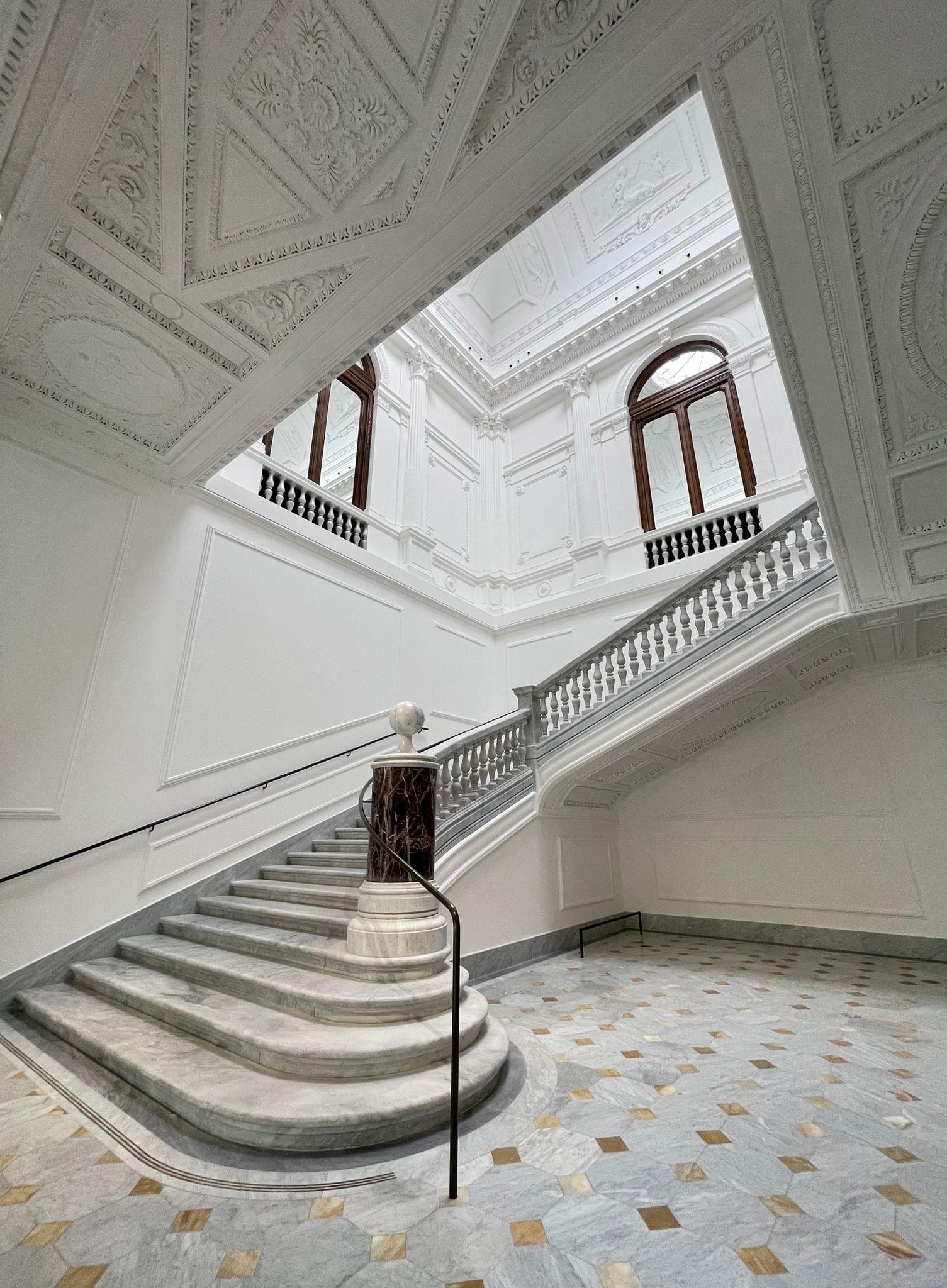
The monumental staircase that takes you to the upper floor. Captured with the iPhone 12 Pro Max’s ultra-wide camera.
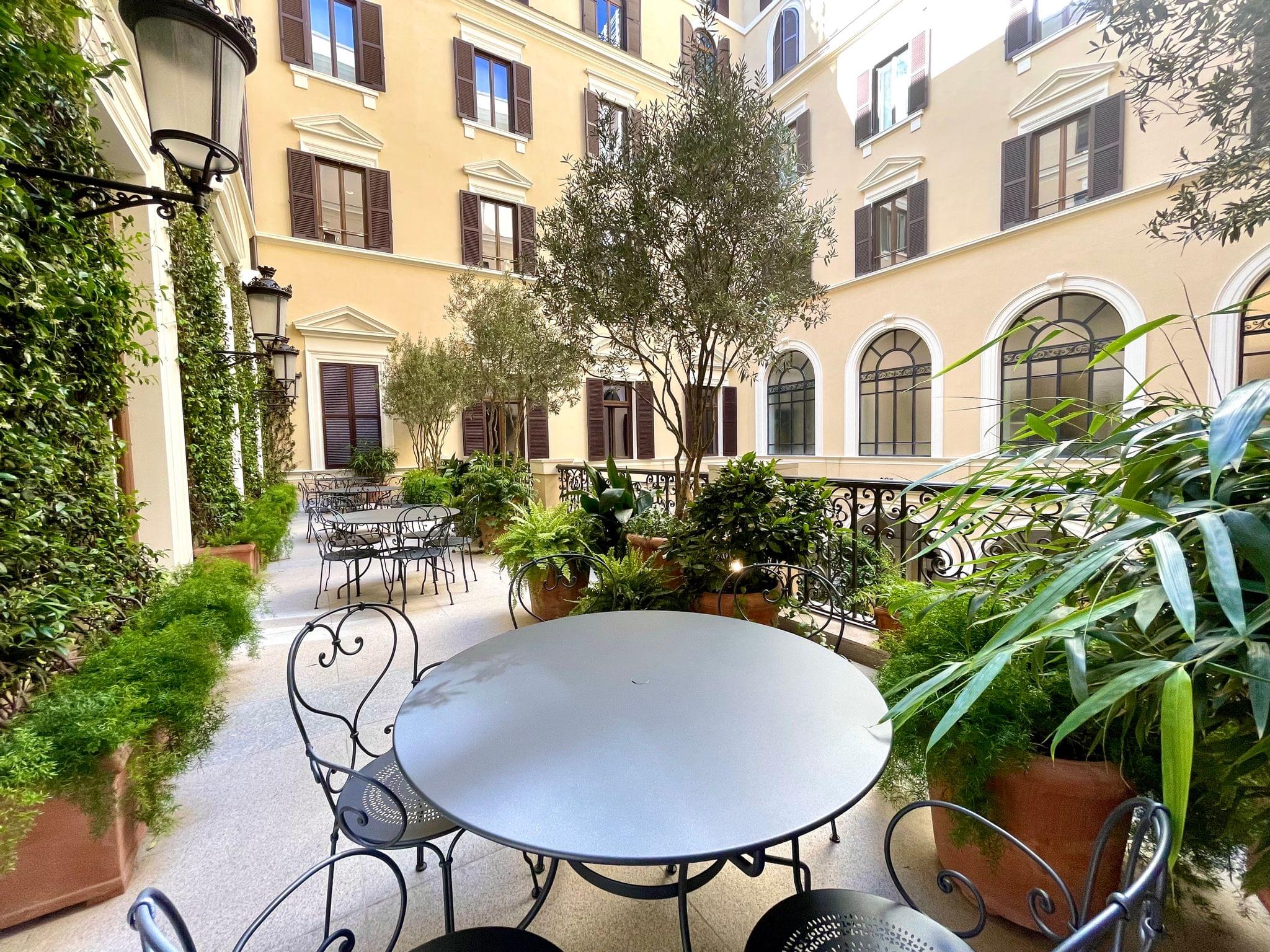
The terrace overlooks the courtyard and features jasmine vines and olive trees inspired by Roman roof terraces.
On the upper floor, what was once the Marquis’ ballroom is now the Forum, which will be used for Today at Apple sessions in the future once those in-person activities are allowed again.

The Forum will be used for Today at Apple sessions in the future. This used to be the Marquis’ ballroom.
My favorite room on the upper floor, however, was the one dedicated to Apple Support and the Genius Bar. Here, a team of conservators managed to restore a geometrically patterned, hand-painted ceiling with golden leaf decorations that overlooks the typical Apple store furniture and a range of iPhone accessories. The ceiling is an incredible sight, and it encapsulates Apple’s restoration efforts for Palazzo Marignoli, highlighting, once again, the importance of letting old and new coexist in harmony, complementing each other.
A Palazzo Reborn
As Silvia and I walked out of the new Via del Corso Apple store yesterday, one thing was clear to both of us: more than the latest iMacs, iPhones, and iPads featured in the store, the most important product Apple is showcasing here is the beautifully restored Palazzo Marignoli.
As someone who’s been living in Rome for the past eight years and who’s unfortunately familiar with the decay and abandonment of several historical landmarks in the center of the city, I can tell you: it’s important to return a place such as Palazzo Marignoli with the long history of Caffè Aragno back to the city, its citizens, and (hopefully) its returning tourists.
If you ever needed a perfect example of Apple’s favorite mantra – that they operate at the intersection of technology and liberal arts – the new Via del Corso store at Palazzo Marignoli in Rome would be it.
More Photos
Below, you can find an assortment of additional photos we captured at Apple Via del Corso.


